Here are Singapore’s top 10 startups to watch in 2024, according to LinkedIn
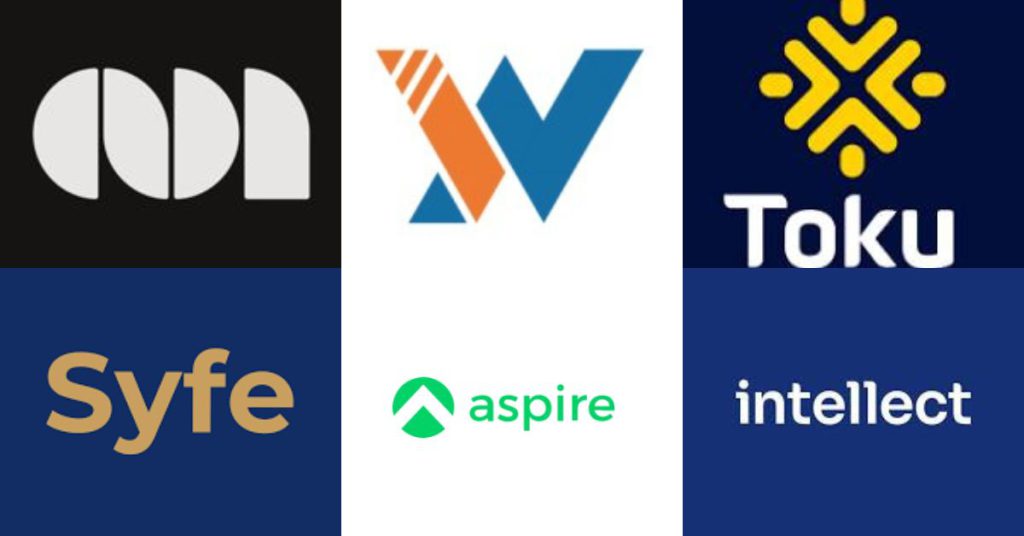
LinkedIn has once again unveiled its annual list of the top 10 startups in Singapore for the fifth time.
These companies aren’t just growing rapidly—they’re also making significant strides in their respective industries, from fintech to health tech and even AI.
The list is built on LinkedIn’s exclusive data, focusing on four key pillars: employee growth, jobseeker interest, engagement within the company, and how well these startups attract talent from top companies.
To qualify, startups must be headquartered in Singapore, privately held, less than seven years old, and have a minimum of 30 full-time employees.
Let’s take a look at the startups that have made the cut this year, including some familiar names from last year and a few new entries that were not featured on last year’s list.
Returning champions
1. Endowus
Founded in 2017, this fintech startup is changing the way Singaporeans invest. As one of the first digital advisors to allow users to invest using their CPF (Central Provident Fund) savings, Endowus is paving the way for accessible, data-driven wealth management.
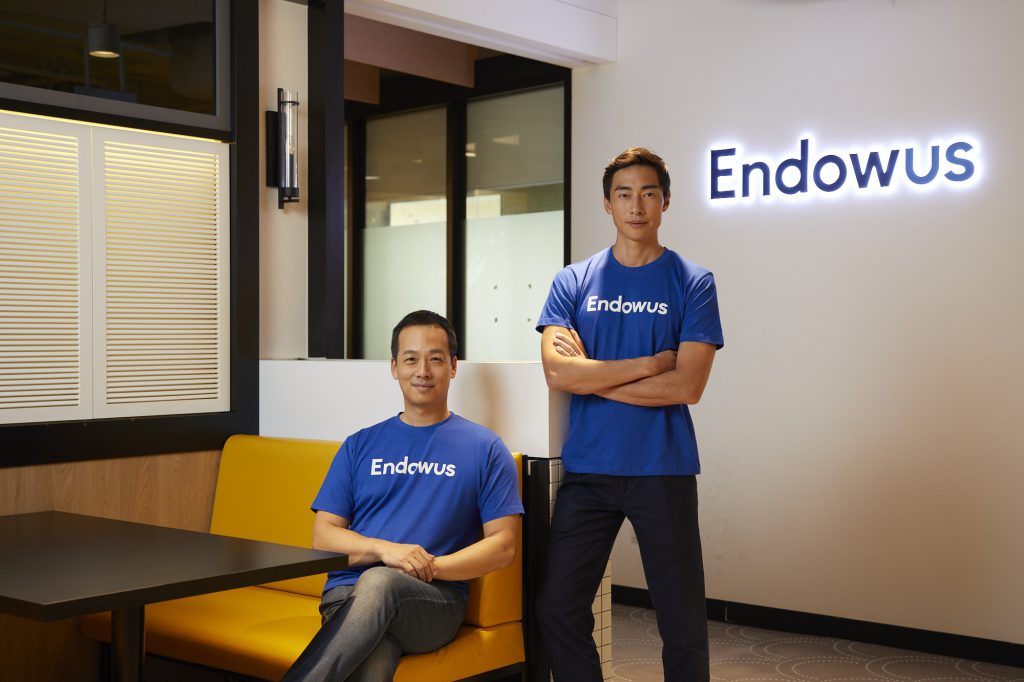
Endowus also partnered with EQT, the third largest private equity firm in the world, to offer EQT funds on its platform.
The partnership marks another milestone in the exponential growth of Endowus’ private wealth offerings, said the company.
The company managed to raise US$35 million in funding with new investors, including Citi Ventures and MUFG Innovation Partners, last year. This brings the company’s total funding raised to US$95 million.
With over US$5 billion in assets under management and US$40 million saved for clients, it’s no wonder they’ve made the list again this year.
Currently, there are three available Singapore-based positions at Endowus. You can apply for them here.
2. Aspire
Aspire, founded in 2018, is a financial operating system designed for modern businesses.
It offers a comprehensive suite of services, from business accounts to automated invoice processing, all accessible through a single platform.
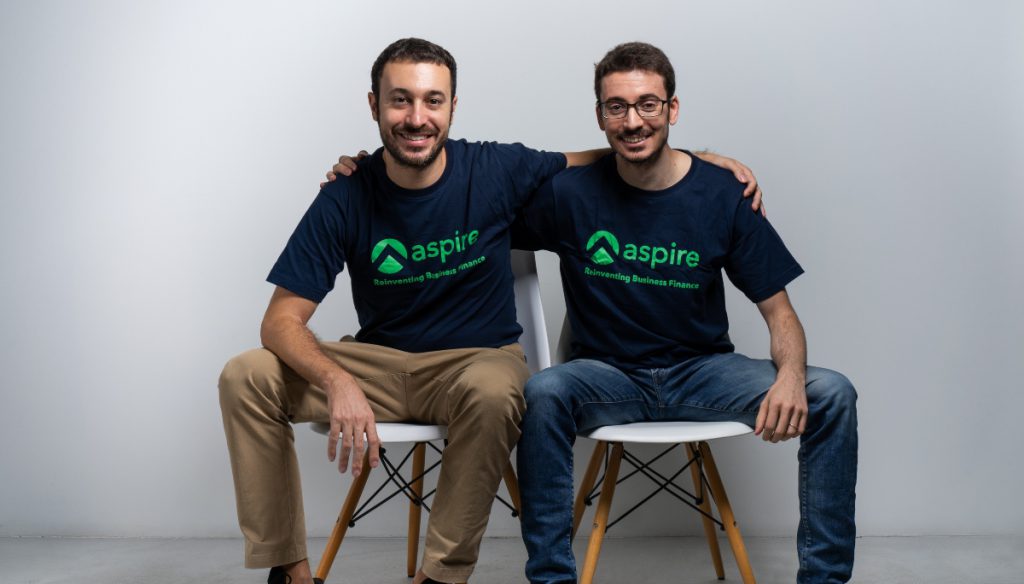
This simplicity and efficiency have made Aspire a go-to for over 15,000 businesses across Southeast Asia.
The startup has raised over US$300 million, with a recent Series C round attracting big names like Lightspeed, Sequoia Capital SEA, and Paypal Ventures.
Aspire’s all-in-one financial management tools simplify everything from cross-border payments to expense tracking, making it an indispensable resource for SMEs looking to streamline operations.
Currently, there are 21 open roles at Aspire’s Singapore office. You can apply them here.
3. YouTrip
Launched in 2018, YouTrip has established itself as a key player in the fintech space, offering consumers and businesses easy access to multi-currency payments.
The company is a major payment institution licensed by the Monetary Authority of Singapore, and its services include payments, foreign exchange, remittances, and cards.
With a total of US$100 million raised, including a Series B round led by Lightspeed, YouTrip is set on further expanding its presence in Southeast Asia.

The platform supports payments, foreign exchange, and remittances, processing nearly US$10 billion in annual transaction volume.
After a recent Series B funding round of US$50 million, they’re set to expand further into Southeast Asia, making cross-border payments even more accessible.
YouTrip is currently hiring for two positions in Singapore. You can apply for them here.
4. GetGo
GetGo is driving the car-sharing revolution in Singapore. Since its launch in 2021, GetGo has expanded its fleet from 300 to over 2,100 vehicles, including nearly 100 electric vehicles.
With 250,000 users and a recent S$20 million funding boost, GetGo plans to scale its electric fleet to 10,000 vehicles by 2030. For those looking to ditch car ownership but still need the flexibility to drive, GetGo is the go-to service.
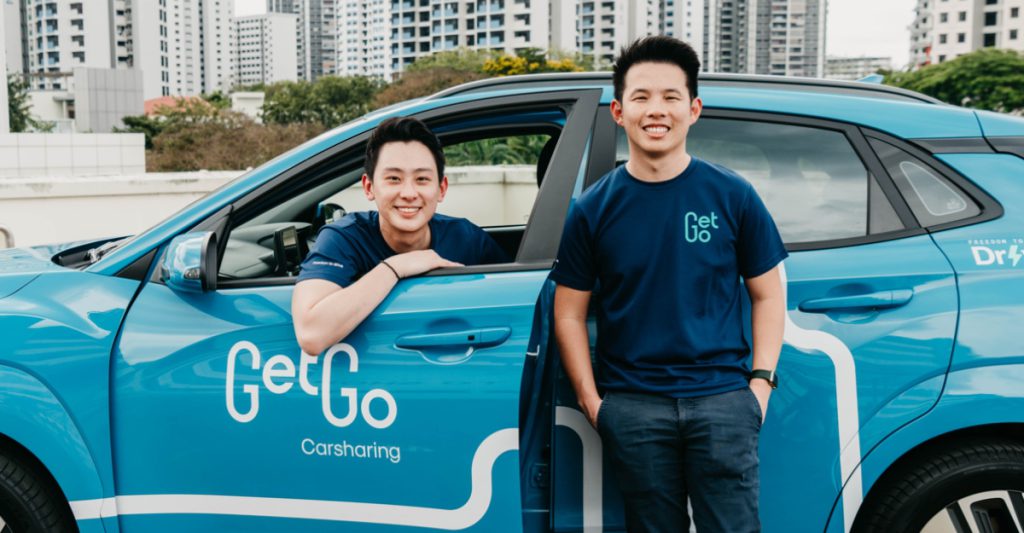
Last year, GetGo raised S$20 million from family-backed investment firm Treis Group. It said that the funds will be used to accelerate the growth of the car-sharing platform’s electric fleet to 10,000 greener vehicles by 2030 and to strengthen its technology and operations as well.
There are currently nine available positions at GetGo, ranging from marketing to operations. You can apply for them here.
5. Syfe
Another fintech company, Syfe, offers an all-in-one investment platform for everyday investors that can access simple, smart, and affordable investing to grow their wealth.
After last month’s US$27 million supplemental raise on top of a 2021 Series B round, Syfe is eyeing expansion into Japan and South Korea, building on its success in Hong Kong and Australia.
From there, it is likely to seek partnerships to enter Japan and South Korea, said its founder, Dhruv Arora.
Currently, Syfe has six job postings in Singapore. You can apply for them here.
Newcomers on the block
6. Caladan
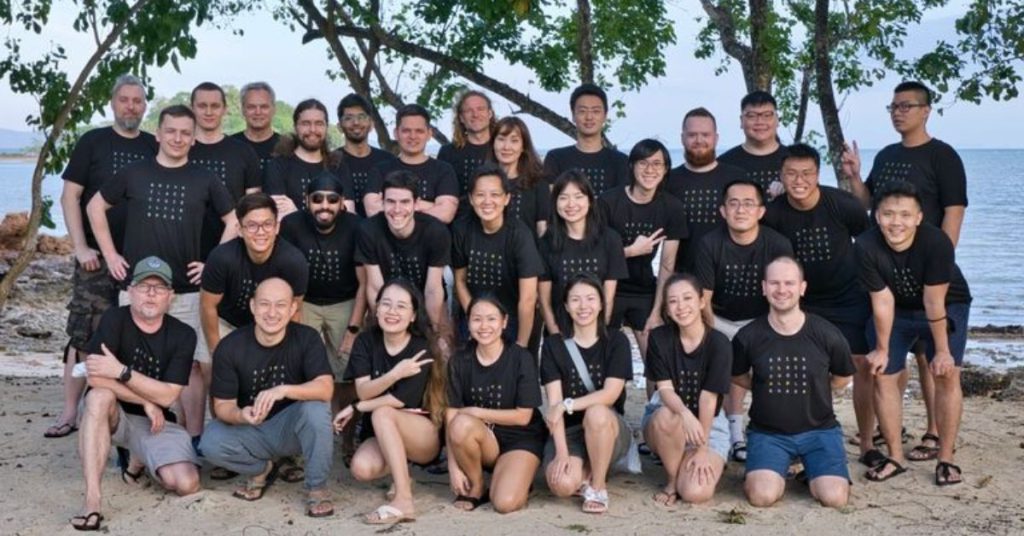
Founded in 2018, Caladan is a trading group that transacts over US$2 billion daily in crypto assets. Caladan was formerly known as Alphalab.
Caladan primarily serves the blockchain and cryptocurrency markets, leveraging its technology to trade on various centralised and decentralised exchanges.
It operates algorithms across more than 1,000 digital assets and 65 exchanges.
Caladan currently has two job openings for Singapore-based positions. You can apply for them here.
7. Intellect
Intellect is redefining mental health support in Asia with its personalised well-being platform.
Founded in 2019, the startup has secured US$20 million in Series A funding, making it the largest venture round raised by any health company in Asia last year.
Intellect offers a comprehensive suite of mental health solutions, from self-care apps for individuals to customised programmes for organisations.
Their rapid growth and adoption across the region highlight the increasing importance of mental health in the workplace.
11 positions are currently available in Singapore. You can apply for them here.
8. Silicon Box
Founded just three years ago, Silicon Box is making waves in the semiconductor industry. The company offers advanced semiconductor integration services, running the entire chiplet production process from design to manufacturing.
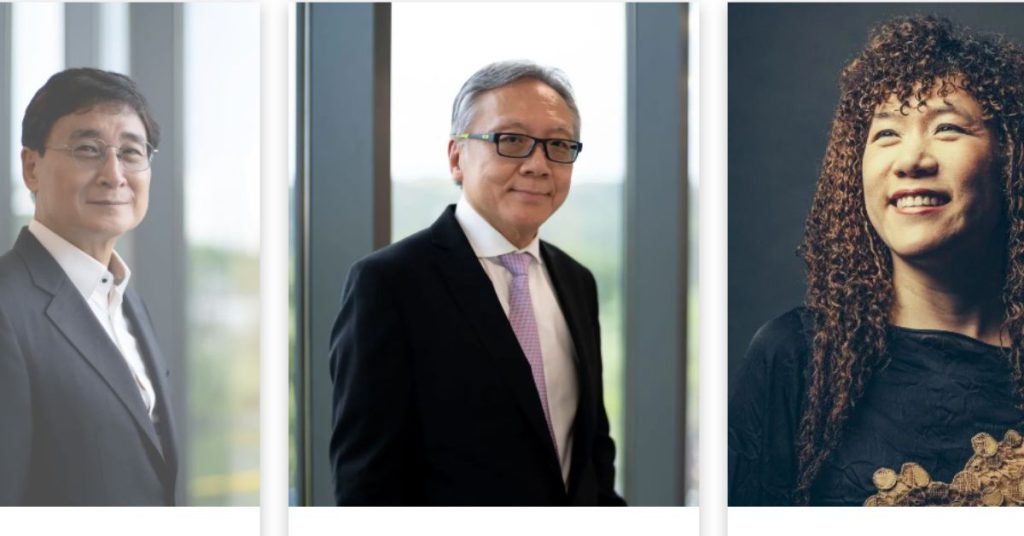
Their goal is to provide alternatives to traditional packaging schemes, addressing a critical need in the global supply chain.
In early 2024, Silicon Box announced a US$200 million funding round, propelling its valuation to over US$1 billion. The company is also planning a €3.2 billion investment in a new semiconductor fab in Italy, which will significantly enhance global manufacturing capacity.
With nine open positions in Singapore, Silicon Box is looking for individuals to join in fields ranging from engineering to customer service. You can apply for them here.
9. WIZ.AI
WIZ.AI, established in 2019, specialises in conversational AI technology that enhances customer engagement.
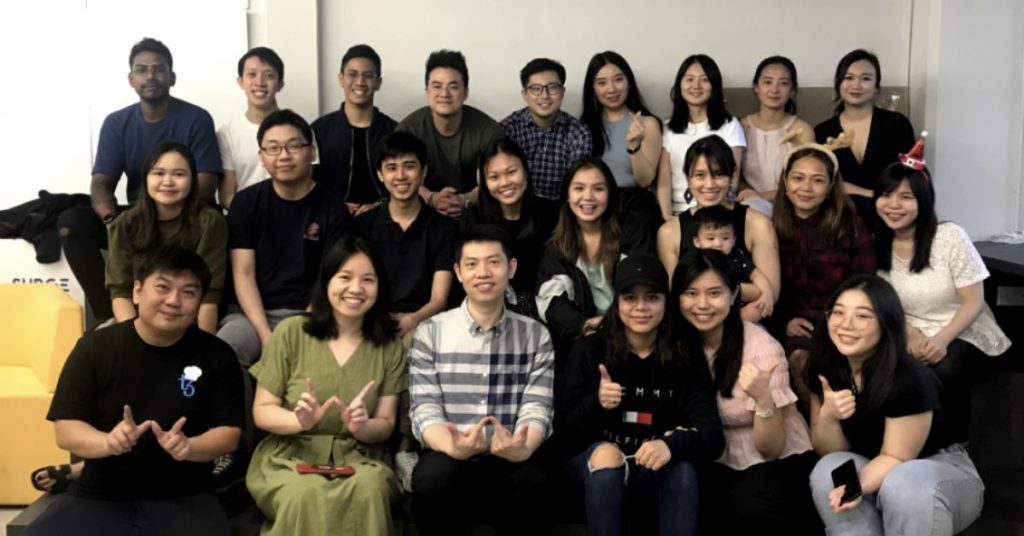
Their AI-powered Talkbots are capable of holding natural, speech-based conversations, providing a more human-like customer service experience.
In 2022, WIZ.AI raised US$20 million in Series A funding, and earlier this year, they launched TalkGPT, leveraging the power of ChatGPT for even more personalised customer interactions.
Recognised as a World Economic Forum Technology Pioneer, WIZ.AI is at the forefront of AI-driven customer support solutions.
While there are currently no open positions in Singapore, WIZ.AI remains a company to watch as it continues to innovate in the field of AI.
10. Toku
Toku provides cloud communications and customer experience solutions, helping businesses integrate communication tools with customer data and business processes. The company was established in 2017.
This year, Toku raised US$9.3 million in a funding round led by Gradient Ventures, bringing their total funding to nearly US$20 million.
Toku’s solutions are particularly valuable for businesses looking to streamline customer interactions and improve operational efficiency. With plans to expand into Mexico, Brazil, and Chile, Toku is set for significant international growth.
Though there are no current openings in Singapore, Toku’s growth and innovative approach to business communications make it an attractive prospect for future job seekers.
- Read other articles we’ve written about Singaporean startups here.
Also Read: 5 scenarios in which you would appreciate having the reliable ASUS Vivobook 16 for work
Featured Image Credit: Caladan / Aspire / Intellect / Toku / WIZ.AI / Syfe
Sidec aims to nurture 300 startups and SMEs to grow Malaysia’s GDP, here’s the game plan
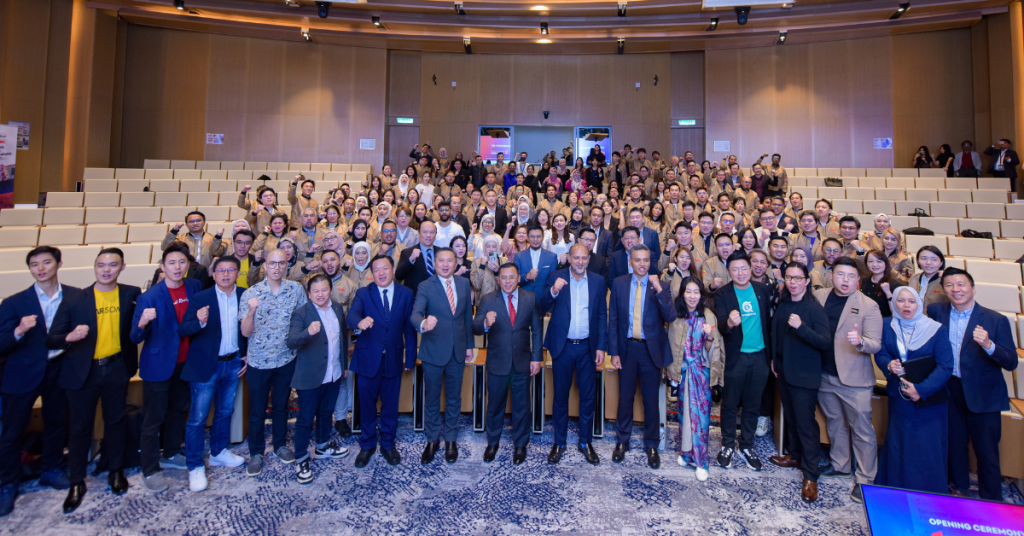
[This is a sponsored article with Sidec.]
What kicks off a business idea is often that exciting eureka moment.
We’ve all been there—you’re sitting with friends, someone mentions a problem they’ve faced, and suddenly an idea sparks, followed by, “We should start a business!”
But that’s the easy part.
The real challenge comes after, when testing, refining, launching, and scaling your idea, all while finding the right team and overcoming continuous pivots. Then, you’ll have to secure funding and continuously manage your costs to build your company’s resilience to push through setbacks.
That’s where the Selangor Twin Accelerator Programme comes in. Launched by the Selangor Information Technology and Digital Economy Corporation (Sidec), the programme consists of Selangor Accelerator Programme 2024 (SAP24) and Selangor E-Commerce Accelerator Programme 2024 (ECX24).
The Twin Accelerator Programme aims to help Selangor’s SMEs and startups grow, providing mentorship and overseas opportunities to turn your business idea into a million-dollar company.
550 applied, but only 100 made the cut
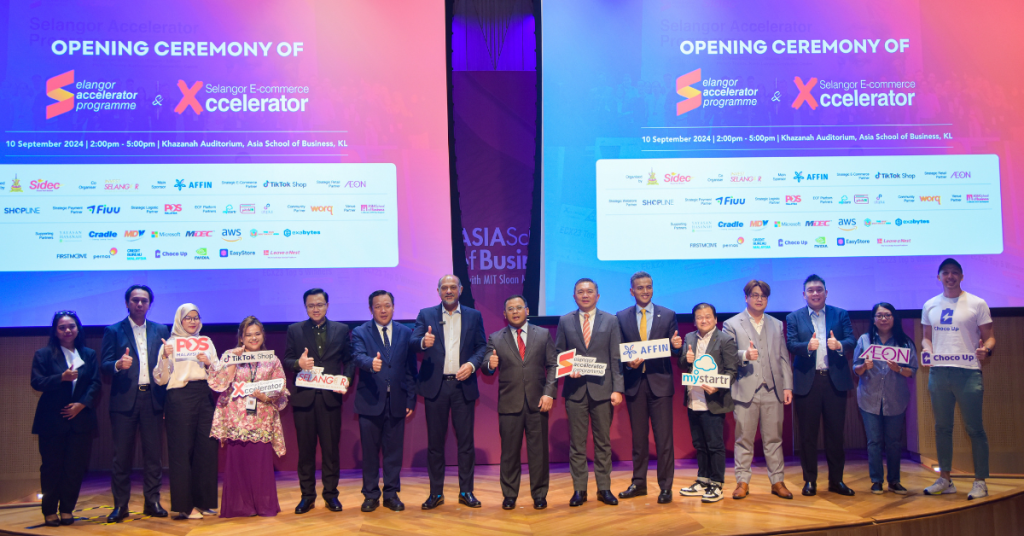
“We have received a remarkable number—over 550 applications for both SAP24 and ECX24 programmes, showcasing the strong interest and enthusiasm within the entrepreneurial community in Selangor,” said Yong Kai Ping, CEO of Sidec.
Sidec’s Head of SME Digitalisation Department, Salman Ahmad told Vulcan Post that the companies were chosen based on their innovation, market potential, scalability, and the strength of the founding team.
“Additionally, we look for high-impact, high-value, and high-effort founders who demonstrate charisma and leadership qualities—traits that are essential for navigating rapid growth,” he added. “A key differentiator is the readiness of these teams to scale operations while aligning with global trends and local market dynamics.”
Scaling ecommerce companies
50 SMEs from industries like F&B, home living, fashion, wellness, and social impact have been shortlisted for ECX24, and it’s clear why entrepreneurs see value in this programme.
Over four months, they’ll dive into essential workshops and pitching courses that cover everything from AI in ecommerce to cross-border expansion and financial management.
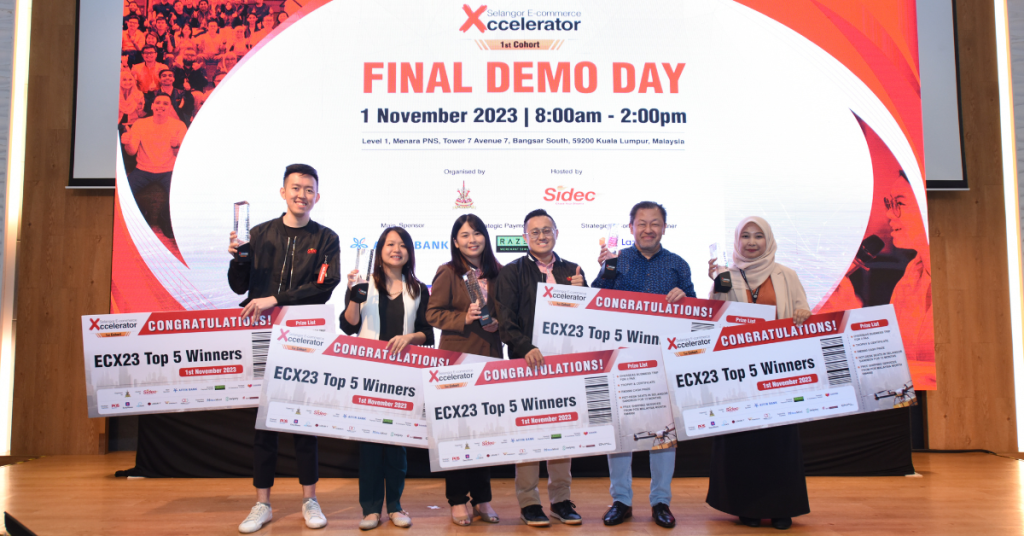
The pitching courses are especially beneficial, as the entrepreneurs will learn to build strong pitch decks, engage with investors, and practise their delivery.
What makes ECX24 valuable is the mentorship SMEs get. Leaders from companies like Carsome, ZUS Coffee, Secret Recipe, and The Lego Group offer personalised feedback and one-on-one sessions. “Many participants stay connected with their mentors after the programme, forming valuable relationships that drive growth,” says Salman.
Take NORI from ECX23, for example—they refined their go-to-market strategy with mentor insights and saw a significant boost in customer acquisition.
The programme will wrap up with a pitching competition where the top 10 winners receive RM30,000 in Pos Malaysia credits. They’ll also get the chance to join ByteDance TikTok’s special programme in Shanghai, opening doors to global markets and cutting-edge digital trends, just like the previous cohort did in 2023.
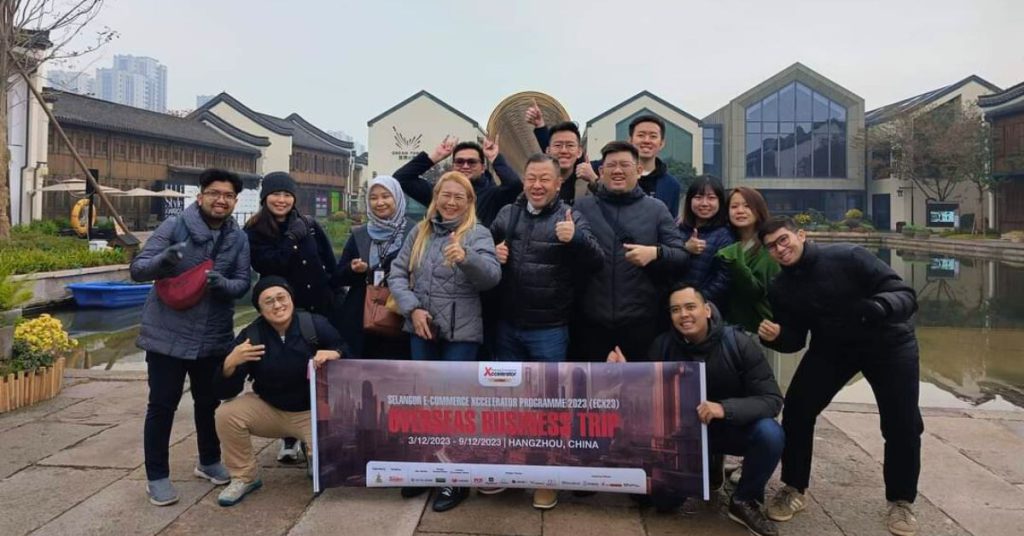
Partners like TikTok Shop, AEON, Shopline, Microsoft, AWS, and NVIDIA will be offering essential resources in AI, cloud computing, and machine learning.
Accelerating tech startups
Meanwhile, a total of 50 startups focusing on AI, smart mobility, bio-based solutions, and net-zero innovations have been shortlisted for SAP24.
Since its launch in 2018, SAP has been Sidec’s flagship accelerator programme, supporting over 150 companies, with 34% securing funding and 10% reaching valuations over RM100 million, Sidec told us in 2023.
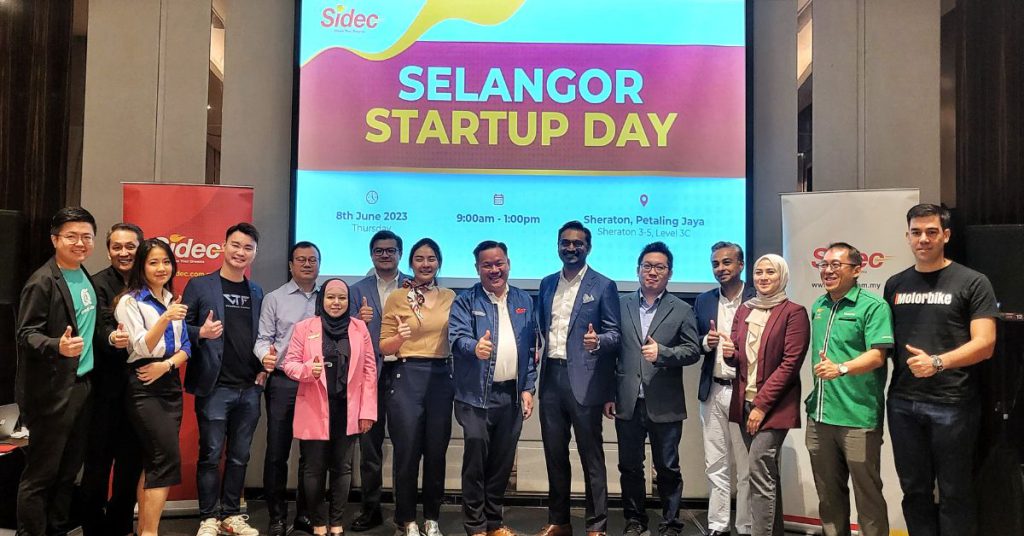
The programme offers mentoring, networking, workshops, and resources to help startups become investment-ready and expand.
Participants will get exciting perks like cloud services, CXO Club membership, and opportunities to showcase their company at Sidec’s annual Selangor Smart City and Digital Economy Convention. Since its initial rollout, SAP has nurtured 190 startup companies, including Nexmind AI, Seed Dream, Borong (formerly known as Dropee), Entomal, and many others.

This year, SAP24 introduced a specialised long-stay overseas trip for selected participants, tailored by vertical according to their business focus.
“The long-stay overseas mission in SAP24 provides startups with invaluable exposure to international markets, but it also comes with challenges such as navigating different regulatory environments and cultural differences,” Salma informed.
Sidec will support these startups by connecting them with local partners who guide them in understanding the nuances of the markets they are entering.
“The biggest benefit is the formation of long-term partnerships and collaborations, which foster innovation and enable startups to adapt and thrive in foreign markets,” said Salman.
As the programmes continue to expand their impact, partnerships play a crucial role in their success. This impact can even be backed by the experience of nine startups who were selected by Sidec for their most recent overseas pitching expedition in Tokyo.
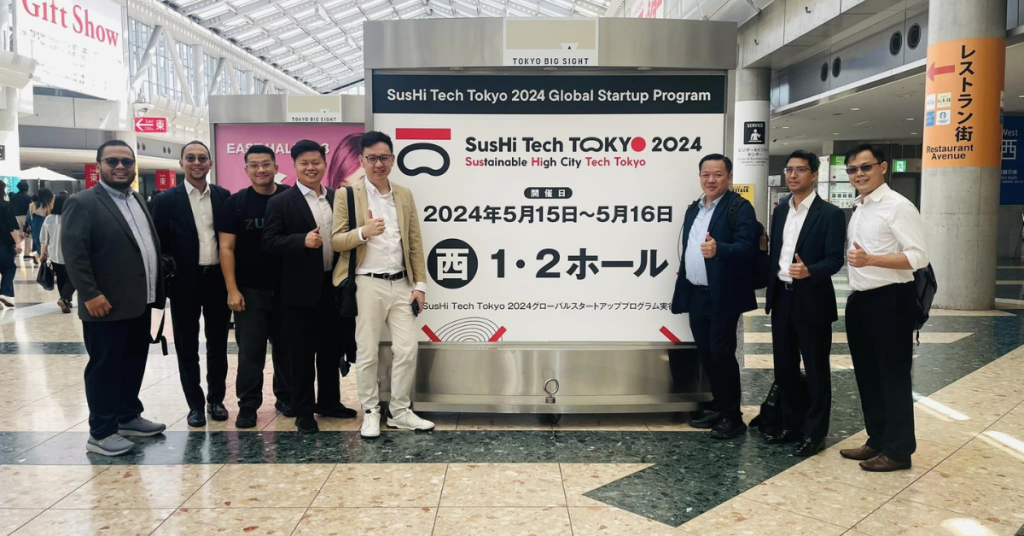
AFFIN BANK is the main sponsor of the Twin Accelerator Program, with Invest Selangor Berhad (ISB) as co-organiser for SAP24.
Nurturing 300+ entrepreneurs over 5 years
Sidec aims to nurture over 300 entrepreneurs in the next five years, driving economic growth and contributing to Selangor’s GDP.
As the startup ecosystem becomes more competitive, entrepreneurs will want to tackle major global challenges like sustainability, cybersecurity, and AI fraud to stand out.
Addressing these issues requires innovative solutions and a focus on long-term impact, and Sidec is on the lookout for entrepreneurs ready to brave these challenges and find solutions to offer in the market.
With ECX24 and SAP24 wrapping up later this year, they’re already on the hunt for SMEs and startups in Malaysia keen to join the Twin Accelerator Programme in 2025.
Also Read: Sidec handpicked these 9 M’sian startups to pitch to the Tokyo govt. Here’s what they learnt.
Featured Image Credit: Sidec
Sidec handpicked these 9 M’sian startups to pitch to the Tokyo govt. Here’s what they learnt.
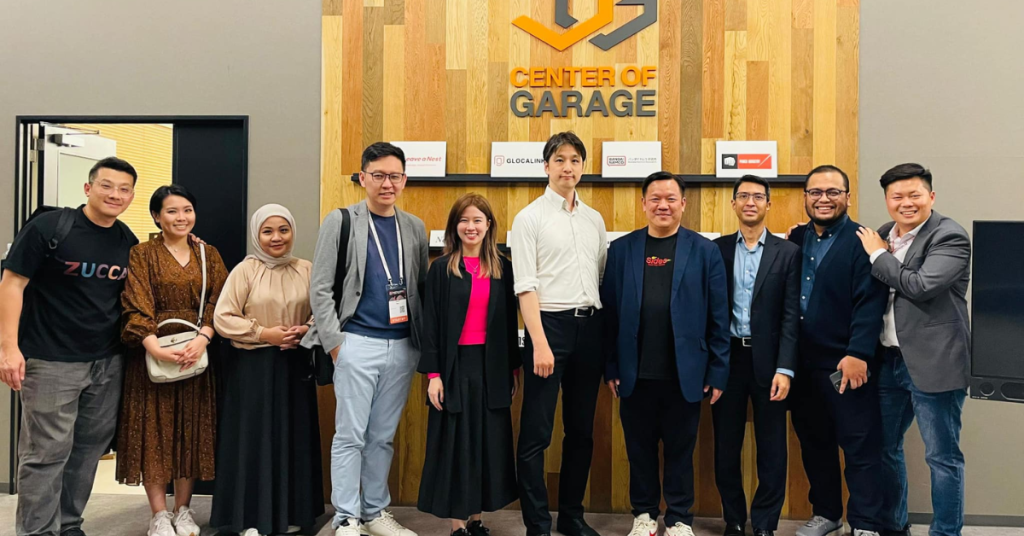
[This is a sponsored article with Sidec.]
From May 12 to 18, 2024, nine Malaysian startups took part in a week-long pitching expedition to Tokyo, Japan. Organised by the Selangor Information Technology and Digital Economy Corporation (Sidec), the Pitch Malaysia Series aimed to connect these startups with international venture capitalists (VCs) for funding and scaling opportunities.
This initiative gave Malaysian startups invaluable exposure on the global stage, providing them with networking opportunities and helping boost their global competitiveness.
A look into Tokyo’s innovation landscape
The selected startups explored Japanese innovation hubs such as Leave a Nest Japan, a prominent incubator for deeptech startups. They also participated in significant conferences like SusHi Tech Expo Tokyo and Startup JAPAN 2024.
With networking being a key component of the trip, participants engaged in sessions like the ASEAN TechCrossroads Mixer, which brought together tech startups from across SEA.
They also visited notable organisations such as Plug & Play Japan, Kepple Capital Japan, and the Kawasaki Business Incubation Center (KBIC).
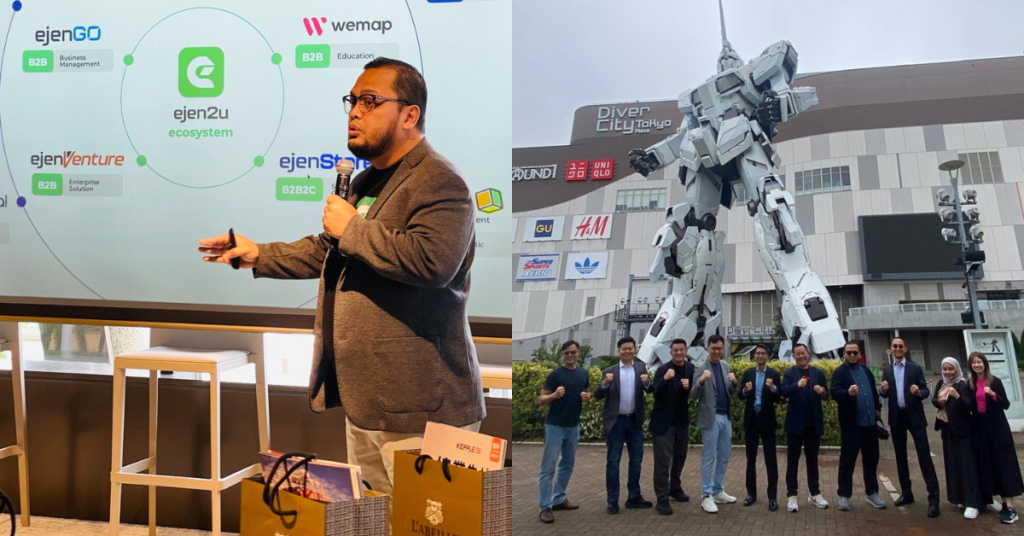
To find out what they learnt from the activity-packed trip and from pitching to international VCs, we spoke to these participants:
| Company | What they do |
| VirtualTech Frontier | Helps businesses create a metaverse presence. |
| Ejen2U | Offers a platform to help business owners manage resellers and dropshippers. |
| ZUCCA | Makes modest fashion more accessible through a social commerce platform. |
| Imagine AI | Provides automation, robotics, and AI solutions to streamline businesses and production processes for companies. |
| Vimigo | Equips companies with a performance reward system that motivates employees through gamification. |
| Voice For Health | Provides a vocal biomarker service to assess a person’s mental health. |
| PayRecon | Helps online sellers effectively optimise daily ecommerce operations. |
| Eventsize | Offers an online ticketing platform for worldwide events. |
| Entomal | Uses black soldier flies (BSF) to treat food waste while creating products such as insect-based pet food. |
Takeaways from the Land Of The Rising Sun
1. Be more aggressive in funding and scaling
The startups shared a common takeaway they received from the judges in Tokyo: they weren’t being aggressive enough.
Shane Mun, founder and CEO of Vimigo, noted how a judge highlighted his conservative efforts in fundraising and expansion.
“Vimigo has traditionally followed a bootstrapped approach, relying on revenue from customers to fuel our growth. This feedback highlighted the need to accelerate our expansion by seeking external funding to move faster and capture larger market opportunities,” Shane said.

Entomal, a seasoned startup that also joined Sidec’s previous expedition to the US, stated that the judges encouraged them to rapidly scale their biotech and waste management solution.
“[We were advised] to place more emphasis on the profitability of our downstream products, like animal feed and frass fertilisers,” Yanni Ching, Entomal’s COO and co-founder stated.
“While our focus has been on showcasing the environmental and waste management aspects of our solution, the investors were keen to see a stronger narrative around the financial returns and the scalability of our revenue streams.”
2. Make global partnerships to penetrate new markets
Touring around Tokyo’s innovation hubs led to immediate partnerships for VirtualTech Frontier’s Jason Low, thanks to his win at the Asian Metaverse Summit a month before the trip.
For Brandon Chua, founder and CEO of Voice For Health, the trip emphasised the global potential of his mental health solution, as they were able to connect with other startups in complementary fields.
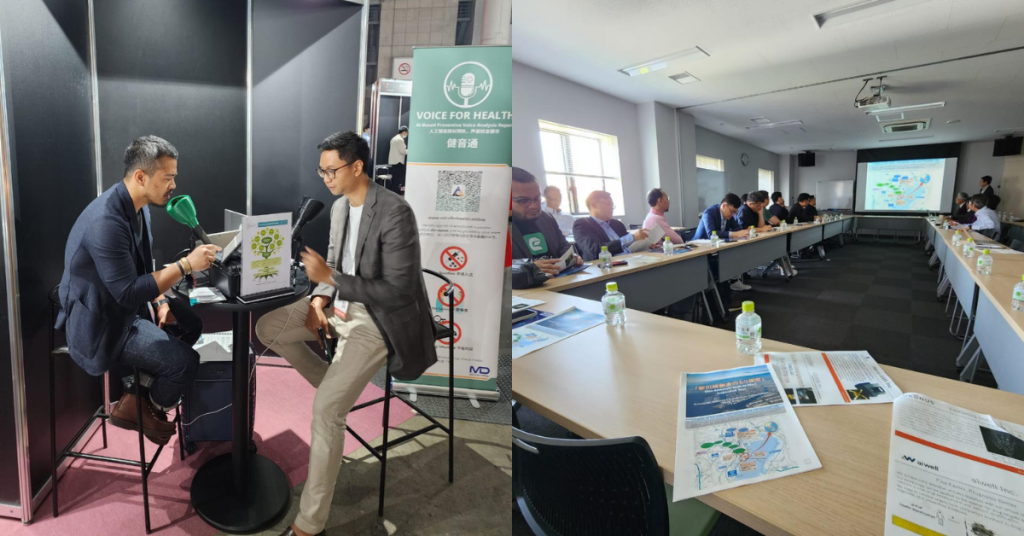
Yanni added that they managed to discuss partnerships with local and international corporations that could greatly benefit Entomal.
“One promising lead we’re pursuing is with a key player in the waste management industry, as well as a university that shares our vision for sustainable waste solutions,” she stated.
Addressing the feedback regarding Vimigo’s need for more aggressive funding, Shane is engaging with interested investors to scale and adapt his solution in different markets.
3. Japan is still shifting from its former risk-averse mindset
Gary Ng, co-founder and CEO of ZUCCA, noticed a key difference in Japan’s preference for fully established products over minimum viable products (MVPs).
“While [Malaysians] focus on creating an MVP, finding product-market fit, and scaling, Japanese corporations tend to prefer a more complete, established product and may consider acquiring the entire company or integrating it into their subsidiaries,” he explained.
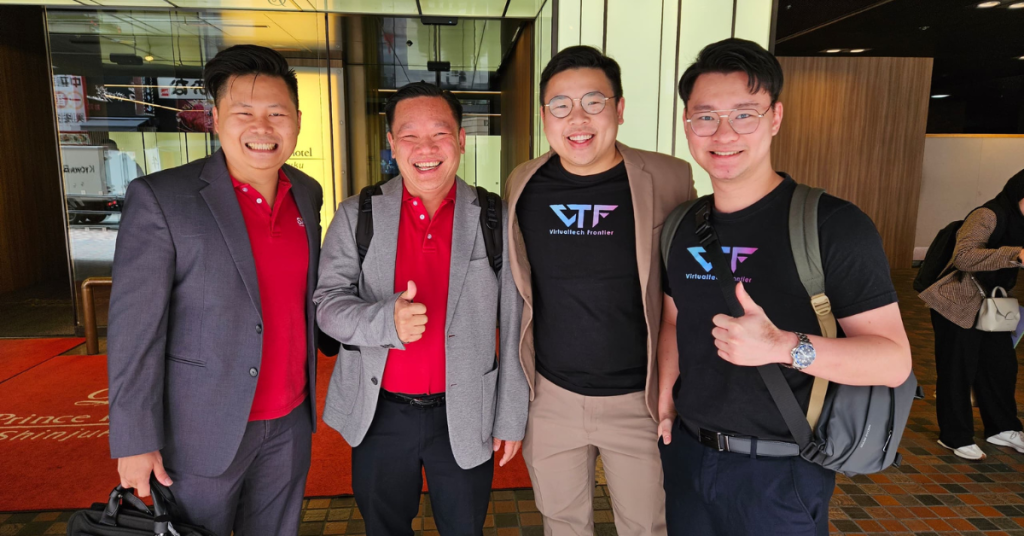
Virtualtech Frontier’s Jason echoed that sentiment, saying, “Reflecting on my own company’s deliverables, it is just to say if you take a half-baked MVP to attempt and sell it to a Japanese customer, most of the time you would probably be looked down upon.”
He added, “What was eye-opening to me was how one of the accelerators in Tokyo showed that SaaS companies are typically not doing that well in Japan, as Japanese companies still tend to favour enterprise service models of technology integration more, rather than subscription-based ones.”
This was the exact challenge the Tokyo Metropolitan Government (TMG) raised to Vulcan Post when they engaged us to bring more awareness to Malaysian and Singaporean startups to participate in the SusHi Tech Tokyo 2024 conference.
But things seem to be changing.
ZUCCA’s Gary added that while the traditional mindset is true, he observed a positive shift, with Japanese corporations becoming more open to new approaches and startup innovation.
4. Think global, not just regional
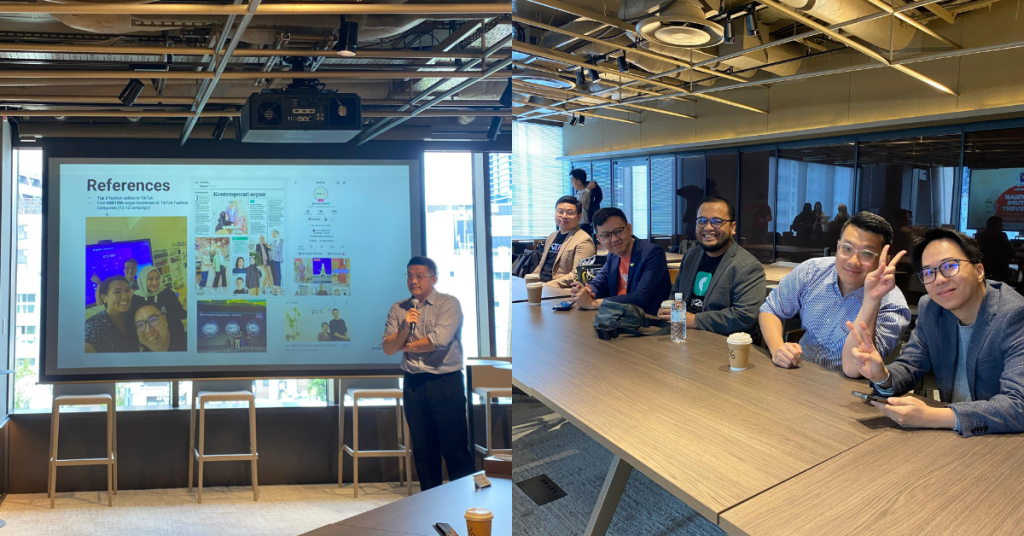
The Malaysian startups were in unison in raising that pitching to Japan’s landscape was vastly different from their local experiences.
Cultural differences and language barriers aside, they noticed that Japan’s panel of judges cared greatly about the long-term roadmap of their companies. This is in contrast to the Malaysian landscape, which values the overall impact their companies were aiming to provide.
“Pitching in Tokyo was more formal, focused on long-term vision and sustainable growth. It required a more measured, thoughtful approach, compared to the fast-paced style we’re used to as a tech startup,” Imran Hadi, co-founder and Chief Visionary Officer of Ejen2U summarised.
When asked if they would do anything differently if given a second chance, the entrepreneurs revealed that they would have dove deeper into understanding the Japanese landscape. They would have also showcased their achievements with greater confidence.
“The seriousness with which Tokyo investors approach these aspects required us to adapt our pitch to meet their higher expectations,” Vimigo’s Shane noted.
-//-
Overall, the startups were grateful for Sidec’s support, which they said helped them navigate cultural differences and structure their pitches effectively.
Additionally, the business communications and meeting arrangements by Sidec greatly aided in the startups’ efforts.
This overseas mission highlights Sidec’s dedication to fostering international collaboration and enriching business networks.
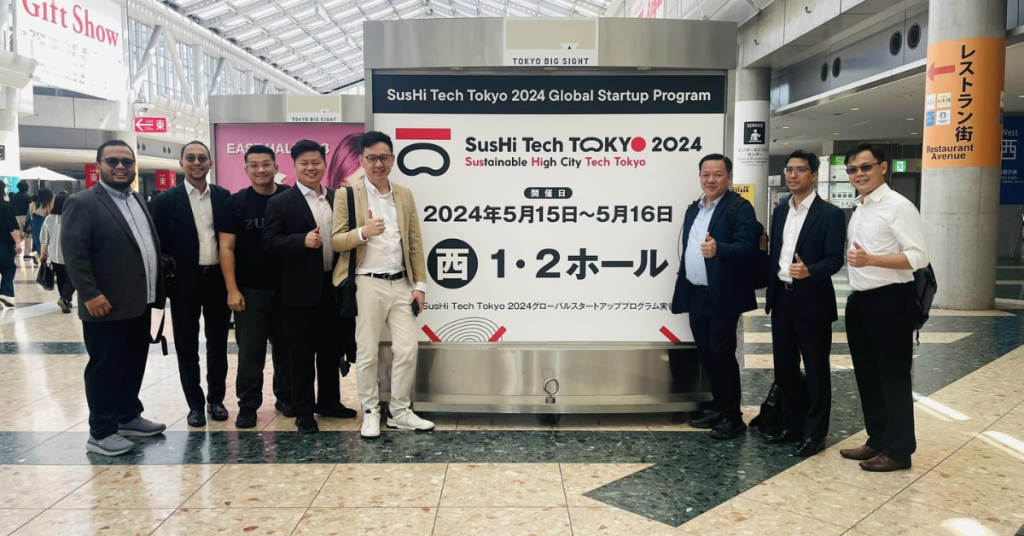
For now, Sidec will be wrapping up their Twin Accelerator programmes which comprise the Selangor Accelerator Programme 2024 (SAP24) and Selangor E-Commerce Xccelerator Programme 2024 (ECX24).
The startups that come out of these accelerators will be given the opportunity to go on an overseas mission similar to Japan’s.
So, if you’d like to take part in future opportunities to connect with industry leaders and drive your business forward, stay tuned for the next SAP and ECX cohorts that will be opened in mid-2025.
Also Read: M’sians can now shop from 10,000+ stores in Japan, no Japanese address needed. Here’s how.
Featured Image Credit: Sidec
S‘pore to launch new office next year to speed up approval & regulatory processes for SMEs

For Singapore’s small and medium-sized enterprises (SMEs), dealing with complicated government procedures and red tape can be a major headache.
According to The Straits Times, a new office will open its doors in early 2025, specifically designed to help SMEs navigate the often perplexing landscape of rules and regulations, especially when these involve more than one government agency.
The SME Pro-Enterprise Office (PEO), set up under Enterprise Singapore (EnterpriseSG) and the Ministry of Trade and Industry, will be all about making life easier for businesses.
Announced by Senior Minister of State for Trade and Industry Low Yen Ling on Monday, the new office will gather feedback from businesses facing regulatory hurdles, particularly those that require cross-agency cooperation, and work with relevant authorities to find solutions, reported the news portal.
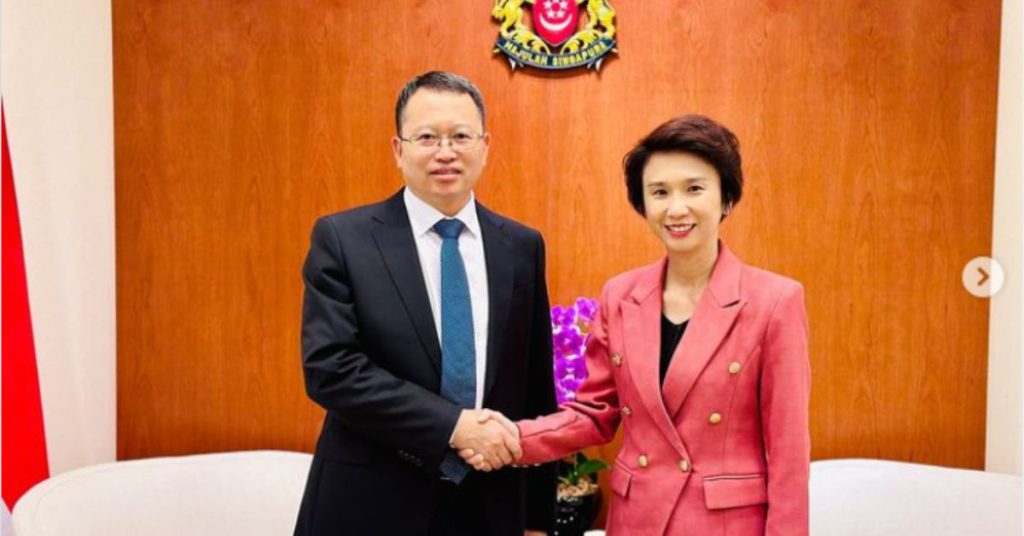
Cutting through the red tape
So, what exactly will the SME PEO do? Think of it as a mediator between businesses and the government, focused on three main tasks, or what they’re calling the “three Ts”: Triage, Track, and Treat.
- Triage: The office will prioritise and sort through the feedback received from businesses, making sure that it gets to the right government agencies for action.
- Track: It will set up a system to measure changes in service standards, keeping tabs on how well the government is doing in responding to these issues.
- Treat: Once issues are resolved, the office will analyse the outcomes to see if there are systemic problems that need to be addressed more broadly.
This approach aims to create a smoother, faster experience for businesses when they need to deal with government regulations, freeing up their time and resources to focus on growth and innovation.
Why it matters?
For SMEs, time is money. Delays in regulatory approvals and compliance can lead to increased operating costs, missed opportunities, and a whole lot of frustration.
An example of an emerging area where it may be helpful to “harmonise” regulations is the installation of solar panels, The Business Times reported.
The issue could potentially involve multiple agencies such as the Singapore Civil Defence Force, the Building and Construction Authority, the Ministry of Manpower, and the National Environment Agency.
“Businesses need smoother and shorter regulatory processes with minimal barriers, especially with the rapid emergence of new technologies and a fast-evolving business environment,” Low was quoted as saying, highlighting the urgent need for this new office.
A central hub for business support
The SME PEO will act as a central coordinating unit, working closely with various agencies to not only address regulatory challenges but also improve inter-agency coordination.
This means that while individual agencies will still handle straightforward cases, the PEO will step in when things get complicated, ensuring no business is left bouncing between departments.
The creation of this office comes on the heels of feedback from the business community and is part of a broader effort to enhance Singapore’s business competitiveness.
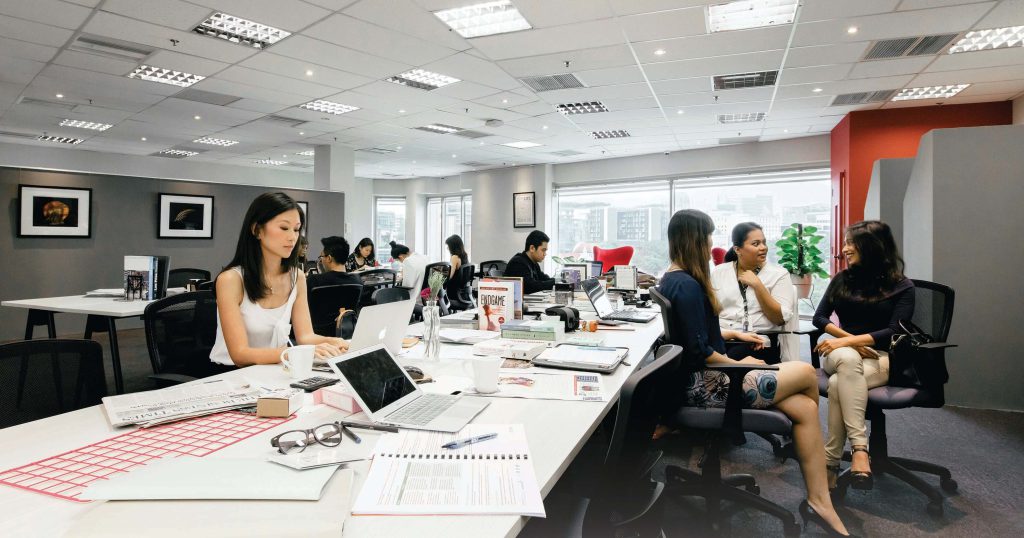
In April, an inter-ministerial committee was set up to tackle these cross-cutting issues and find ways to reduce compliance costs for SMEs.
A step forward in business competitiveness
At this year’s National Day Rally, Prime Minister Lawrence Wong emphasised the importance of reducing regulatory burdens to help businesses stay competitive in a challenging global market.
He cited the example of streamlined processes for drone show registrations, illustrating the government’s commitment to making things easier for businesses, reported The Business Times.
EnterpriseSG’s managing director, Cindy Khoo, echoed this sentiment, stating, “The business operating landscape, including the associated regulatory requirements, has evolved over the years and become more complex.”
The SME PEO will address these complexities head-on, helping businesses navigate the regulatory landscape more effectively.
Looking ahead
With its launch just around the corner, the SME PEO is expected to play a pivotal role in transforming the way businesses interact with government regulations.
Whether it’s speeding up approvals or smoothing out complicated cross-agency issues, the new office promises to be a game-changer for Singapore’s SMEs.
In a fast-paced business world where agility and innovation are key, the SME PEO could be the support system that helps local businesses not just survive, but thrive.
- Read other articles we’ve written about Singaporean startups here.
Also Read: A ClassPass competitor? This new app lets you access nearly 300 fitness studios in M’sia.
Featured Image Credit: iStock
5% increase in non-residents propels Singapore’s population to hit record 6 mil in June 2024

For the first time in the nation’s history, Singapore’s total population passed the six million threshold.
This landmark milestone was recorded in June by the National Population and Talent Division (NPTD) in its annual Population in Brief (PIB). This news was shared to the public just yesterday (September 24, 2024).
It’s a 2% increase from a year ago, where the population then stood at 5.92 million.
During this one-year period (June 2023 to June 2024), a bulk of the boost is actually thanks to increased foreign workers and migrant domestic workers.
Based on the report, here’s a breakdown:
- Citizen population: Increased by 0.7% from 3.61 million to 3.64 million.
- Permanent Resident population: Increased by 1.2% from 538,600 to 544,900.
- Non-resident population: Increased by 5% from 1.77 million to 1.86 million.
For the non-resident population, this growth was seen across most pass types, with Work Permit Holders contributing most to the increase.

With Singapore’s birth rates continuing to decline for the fourth consecutive year, the increase in non-resident population keeps the nation’s population from shrinking over the long haul.
In addition to that, Singapore also takes in a controlled number of Permanent Residents (PRs) and new citizens each year.
New citizenships are granted to PRs who can integrate and contribute to Singapore, and are committed to making Singapore their home. They either share family ties with Singaporeans (e.g. through marriage), or have studied, worked, or lived in Singapore for some time.
According to NPTD, Singapore keeps the PR population size stable at around half a million. “The pace of immigration continues to be measured and stable,” its website states.
Will the non-resident population continue to go up?
If you didn’t know, migrant workers need to receive approval from the Ministry of Manpower (MOM) in the form of an in-principle approval (IPA) before they can work here.
In between that, many steps and intermediaries are involved such as the migrant worker’s employer buying a security bond for their entry.
From CNA’s investigation in July, they found that the recruitment fees are also quite high and can range from S$5,000 to S$16,000. The local authorities are taking measures to ensure that the non-resident population doesn’t get out of control.
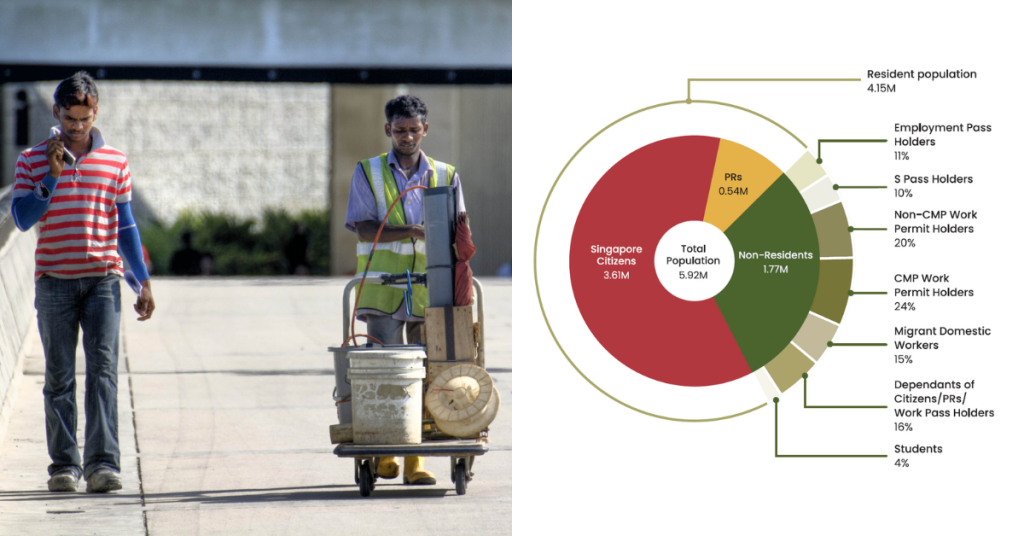
For example, Al Jazeera reported that starting next year, the government will increase the minimum salary requirement for foreigners who want to work in the city-state. There’s also been a hike for the Employment Pass (EP), where applicants need to earn at least S$5,600 per month.
“By regularly updating the qualifying salaries based on the set wage benchmarks, we ensure a level-playing field for locals,” Manpower Minister Tan See Leng told parliament during a budget debate.
So it doesn’t seem like the government is being willy-nilly about accepting migrant workers.
That said, the projection by Minister Indranee Rajah of Singapore potentially becoming an ageing population by early the 2030s is still concerning.
Paired with the possibility of more Singaporean deaths than births in just 10 to 15 years, the citizen population number might continue to drop. For now, bringing in migrant workers is one measure to counteract the negative effects of our growing ageing population.
- Read other articles we’ve written about Singaporean startups here.
Also Read: 5 scenarios in which you would appreciate having the reliable ASUS Vivobook 16 for work
Featured Image Credit: Filbert Kuong via SRN’s SG Photobank
This Singaporean startup cultivates fish fats to make lab-grown meat taste better
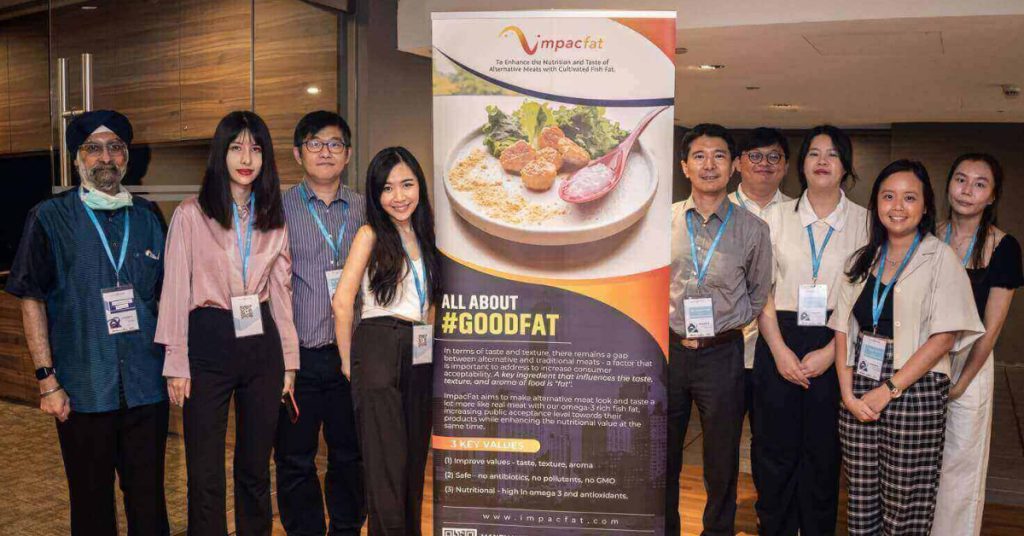
Cultivated meat may offer a sustainable future, but it often falls short in one key area: flavour.
Too dry, too bland—it simply doesn’t satisfy like the real thing, at least according to Singaporean startup ImpacFat.
And the missing link? The startup believes that they’ve cracked the code with their cultivated fish fat.
“Nobody’s working on it”
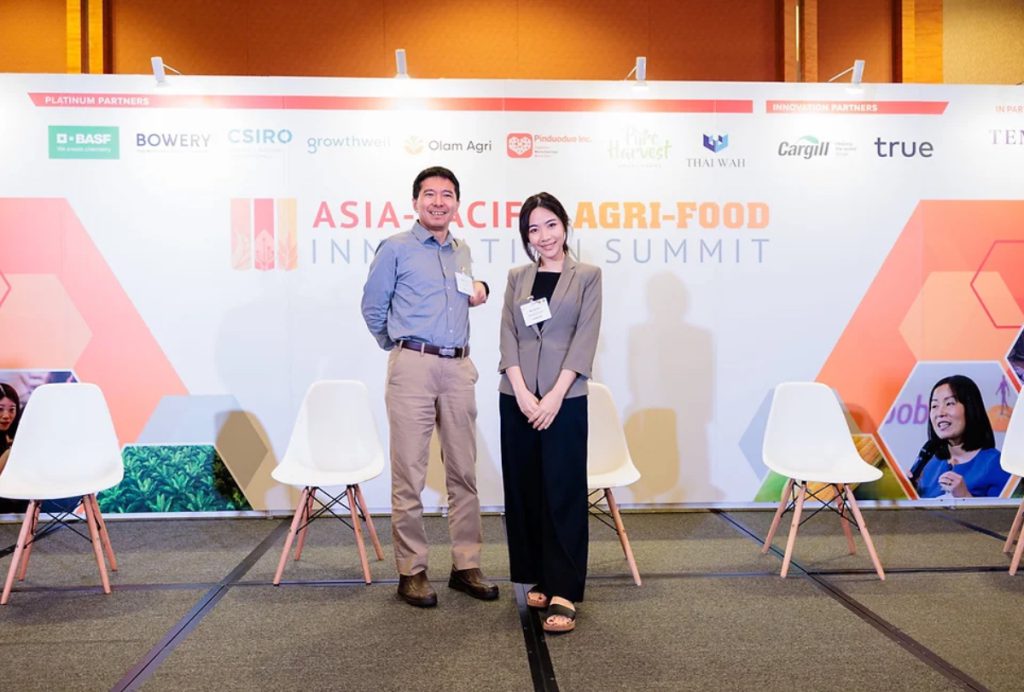
Founded in 2019 by Dr. Shigeki Sugii and Mandy Hon, ImpacFat is a spin-off of the Institute of Molecular and Cell Biology at Singapore’s Agency for Science, Technology and Research (A*STAR).
The idea for the venture was sparked when Mandy reconnected with one of the scientists on the team, a former schoolmate.
Though they had studied science together, their careers took different directions after they graduated—Mandy pursued a decade-long career in the F&B industry, while her friend went on to earn a PhD and join A*STAR, where he worked alongside Dr. Sugii.
“We have been keeping in touch despite taking different paths, and during one conversation, we realised that there was a gap in the cultivated meat industry,” Mandy shared. Many startups were racing to create cultivated meat that could eventually replace traditional sources of protein, yet most overlooked a crucial component: fats.
Nobody’s working on it. Nobody even wants to talk about [fat] because there is some sort of social stigma surrounding the word, but it’s such an important ingredient—we cannot have zero fat in our diets.
– Mandy Hon, co-founder and CEO, ImpacFat
Their cultivated fish fat is free from contaminants
ImpactFat cultivates their fat from fish stem cells which are sustainably sourced from a variety of fish species across the globe.
These cells are then grown in a controlled environment, which means that they are free from mercury, microplastics, and pathogens—contaminants that are commonly present in wild-caught fishes.
The resulting cultivated fat closely resembles natural fish fat, maintaining a semi-solid texture.
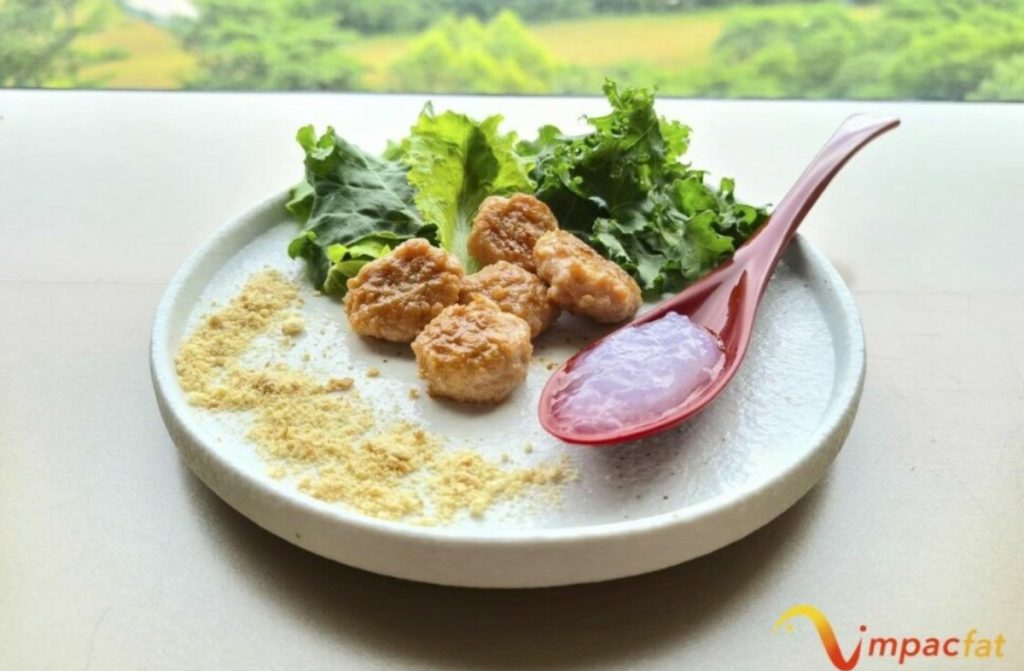
“When our fat is incorporated into other [cultivated meat products], it gives them more texture, more mouthfeel,” said Mandy.
Though this could improve the acceptance and perception of cultivated products, there’s no denying that the industry is currently facing significant hurdles.
Many startups are struggling with scalability due to high production costs, and funding is drying up as investor confidence in the sector is beginning to decline—ImpacFat is no exception to these challenges.
Navigating the challenges of the cultivated meat industry
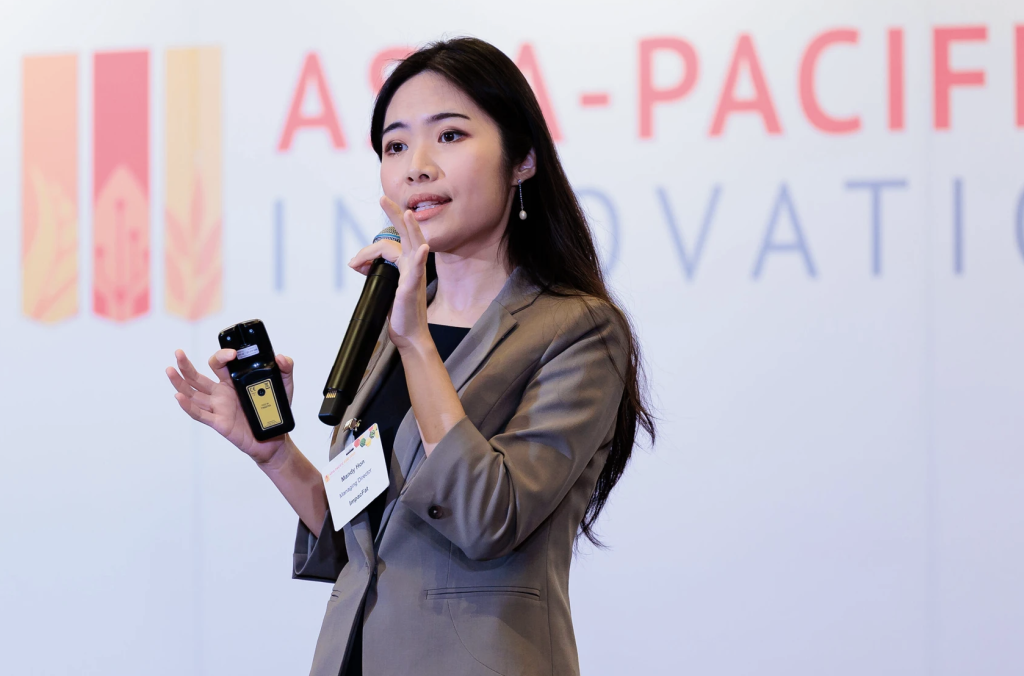
“We use cell-based technology to cultivate our fish fats, and this requires biomedical grade products, which are usually very expensive,” said Mandy.
To lower costs, the startup is seeking to innovate within its production processes. “We are trying to replace every single biomedical component required to create cultivated fish fat with our own in-house media and components,” she explained.
However, the process can be slow and labour-intensive—each step forward requires rigorous testing to ensure that the quality and yield of their cultivated fat remain top-notch.
We need to carry out hundreds of tests, experimenting with different solutions to substitute costly components. This will take up a significant amount of time, as we need to maintain the quality and yield of our cultivated fat at the same time.
– Mandy Hon, co-founder and CEO, ImpacFat

In addition to these challenges, the startup also faced significant hurdles in fundraising, especially since the technology is still in nascent stages.
“It takes many years of research before cultivated meat (and fat) startups can enter the market, and venture capitalists wouldn’t be able to see returns on their investments as soon as other commercial products out there,” Mandy shared.
“So, investors will need to be prepared to wait for a few years before they can actually see revenue. But it’s tough because confidence in the industry has eroded as many startups have failed over the past few years.”
“We need to reassure VCs that the risk of our startup failing is lower”
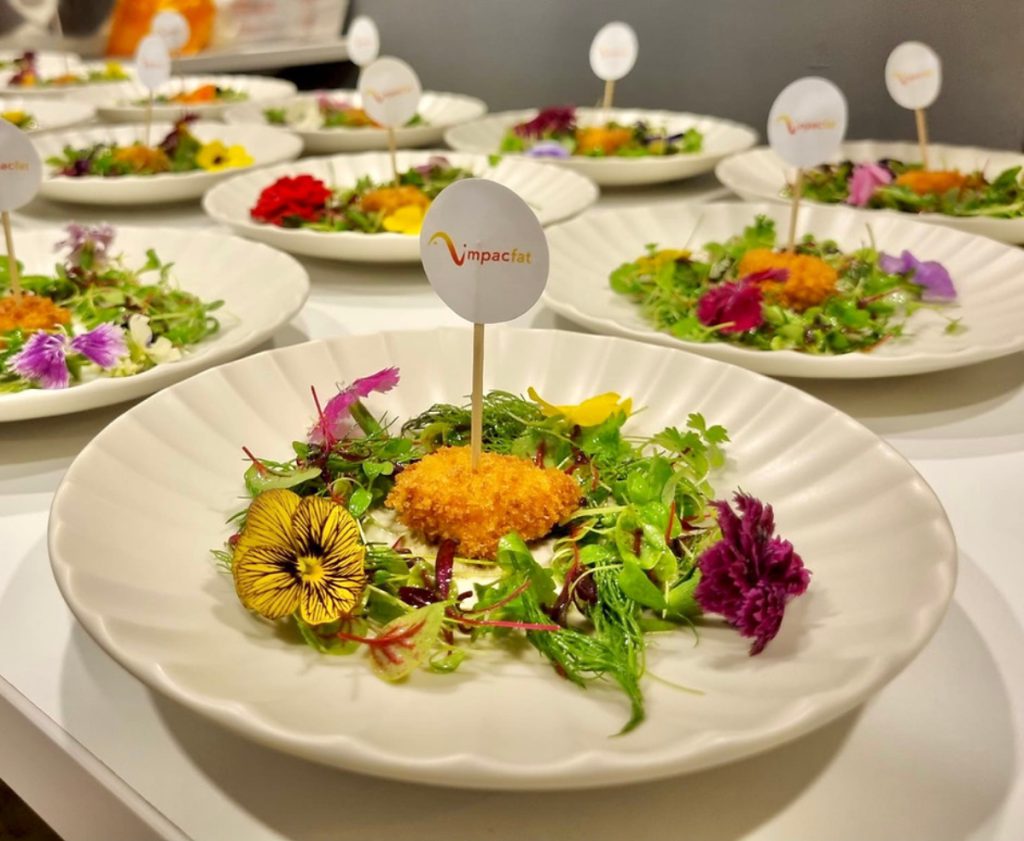
These challenges have not dimmed the startup’s vision. Although the cultivated meat industry is on shaky ground, ImpacFat has refined its strategy in the space by diversifying its revenue streams.
We needed to let venture capitalists know that the risk of our startup failing is lower, so we had to find new revenue streams.
Realistically speaking, our first product to go to market would most likely not be food, so we’re currently exploring supplements and skincare products. We can extract the oil from our cultivated fat to produce other products like Omega-3 nutritional supplements as well as cosmetics.
– Mandy Hon, co-founder and CEO, ImpacFat
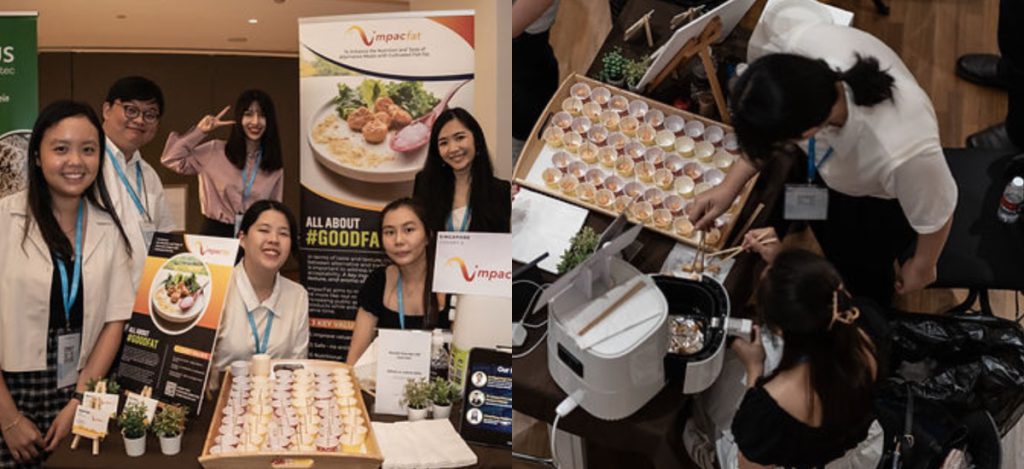
ImpacFat is giving itself two to three years to bring these products to the market, after it closes its seed funding round. Currently, it is looking for additional investors to complete the round, and has secured about 40 to 50 per cent of its target.
Prior to this, the startup has raised a US$200,000 pre-seed funding round with New York-based Big Idea Ventures. “And as an A*STAR spin-off, we’ve also managed to secure grants from the government for a few of our research projects,” added Mandy.
With the additional funding, Mandy shared that the company will be able to scale its equipment and production capabilities. Through their innovations, ImpacFat ultimately hopes to provide healthy, environmentally friendly, and ethically produced products for consumers.
Embark on your startup journey with MAS-regulated ANEXT Bank, one of Singapore’s first digital banks for SMEs.
Also Read: Snappers to eels: S’pore startup Umami Meats on producing “cultivated, not caught” seafood
Featured Image Credit: ImpacFat
Unexpected job survey: Nearly 70% of Singapore employers believe 4-day work week is feasible

Disclaimer: Unless otherwise stated, any opinions expressed below belong solely to the author.
Just yesterday I wrote about the improving conditions of the Singapore labour market, backed by MOM data, and today there’s another indication of a potential revolution on the horizon—the idea of reducing the work week to four days only.
Robert Walters, a British recruitment company, surveyed 5,000 professionals and companies across 11 markets in Asia about the perceptions regarding the 4-day work week both among employees and employers.
And the results are quite surprising.
Of course not among workers—they almost universally (in the range of 90 per cent or higher) cherished the idea of working a day less each week.
But a majority of employers in all surveyed countries are open to it as well.

Singapore came in the middle of the pack but still with a very healthy, near 70 per cent agreement that it is feasible with just as many believing it could increase productivity levels.
That second part is quite ironic, though, considering only 48 per cent of the workers feel they would be more productive, showing a potential mismatch in expectations between staff and their bosses.
Not so quickly
However, while being open to the idea, few employers actually plan to implement or trial it in the near future.
Only 9 per cent of them confirmed plans to transition to or trial a shorter work week in Singapore in the next two years, with a further 9 per cent admitting to internal discussions, though without any concrete plans.
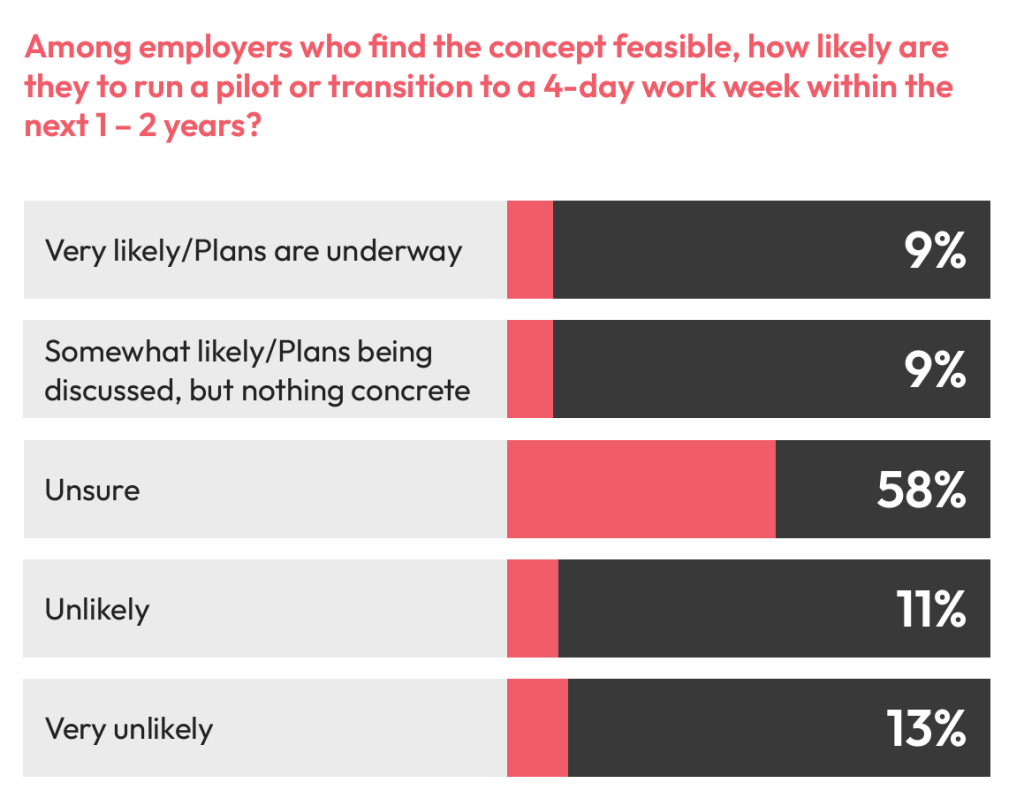
The combined 18 per cent of those likely to go ahead with it put Singapore second to last among all surveyed countries, only ahead of Japan at 16 per cent.
By comparison, the most enthusiastic are the Vietnamese. Even though the fewest of their companies think working four days is a good idea, among those who do, a whopping 66 per cent are very likely or somewhat likely to go ahead with it.
They are followed by Indonesians, at 58 per cent, and Thais at 50, highlighting significant regional differences between accepting the concept and expressing the will to actually implement it.
By this measure it doesn’t seem Singaporeans are the first in line to experience it.
1 in 2 Singaporeans are willing to share the burden
Of course, there’s more nuance to working a day less. After all, it doesn’t automatically translate into fewer hours. And Singaporeans, along with most professionals in other surveyed countries, are cognisant of that.
46 per cent, so nearly one in two, would accept an additional two hours on the job during each remaining work day, in exchange for an extra free day. This is in between 37 and 59 per cent reported elsewhere. So, in terms of time devoted to work it means no difference, just reallocation of eight hours from Fridays to rest of the week.
That said, 58 per cent would like to keep hybrid work arrangements, so they do not foresee themselves coming in to the office on each of the remaining weekdays. Which is understandable, considering the added commute time which would add up to 12 to 13 hours of commitment, leaving little time for anything else other than sleep.
Without some form of hybrid work, it could quickly make the arrangement exhausting and untenable in the long run.
More questions than answers remain
While the idea may be appealing to both workers seeking to work less and employers who want to ensure satisfaction of their staff, leading to higher productivity and talent retention, the practice of a 4-day work week still has fewer answers than questions.
Daily working hours and hybrid arrangements are only one category. It’s clear that not everybody can be present at work for just four days. So, would it mean companies closing down on Fridays or simply operating in different shifts, with employees enjoying different days off?
After all, much of business is about human interaction, and someone still has to be available to deal with clients.
It’s one of the reasons a trial of a shortened week failed in a Hungarian unit of T-Mobile, as reported earlier this year, due to the mismatch between the needs of customers as well as different units within the same company, which could not transition to a 4-day schedule.
There are questions regarding productivity, pay, and headcount as well.
Would it translate into higher output or rather make people burn out more quickly? Would more have to be employed to fill in the gaps? And if they did, how would that impact remuneration and bonuses of all workers? Would they rather return to a five day schedule for more money?
There are no easy answers here, as it has to be tested in practice in different business settings.
The only thing we can be sure of is that more companies will try the idea in the coming years, providing experiences and figures for everybody else.
Also Read: Singaporeans are enjoying the best job market conditions on record, according to MOM data
Featured image: joyfull / depositphotos
Mints with a twist: Why he started a S’porean mint brand with turmeric as the star ingredient
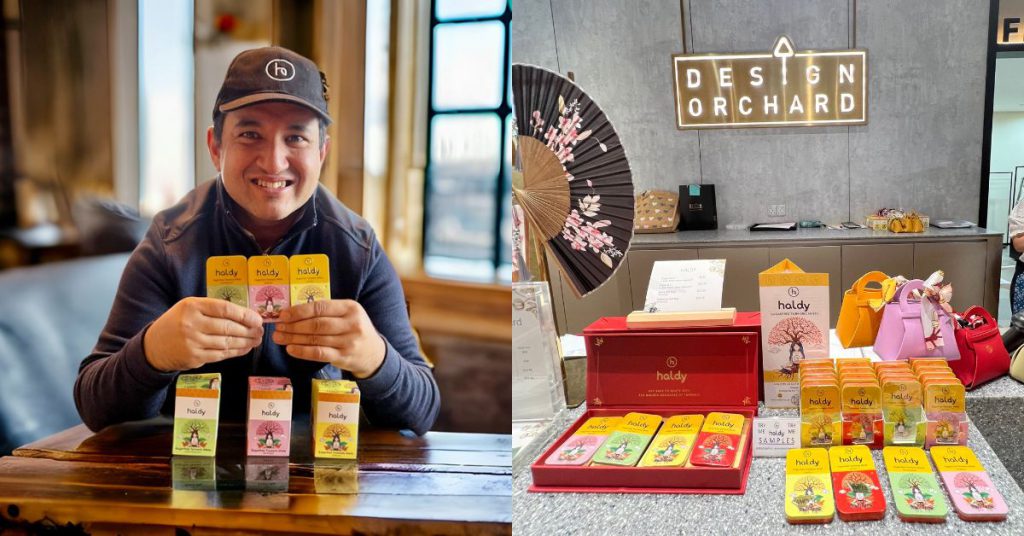
During the pandemic, many of us turned to boosting our immunity, seeking comfort in various health supplements. Turmeric, with its known health benefits, became a common sight in households.
But for Pushpendra (Push) Sharma, founder and CEO of HaldyPlus Nutrition Pte Ltd, turmeric’s traditional forms weren’t cutting it.
“I wanted to incorporate turmeric into my daily routine, but pills, powders, or capsules just felt too medicinal,” Push told Vulcan Post.
So, he thought, “Instead of the usual supplements or powders, why not put turmeric in a breath mint, something we all use regularly?”
This gap in the market sparked a journey that led to the creation of Haldy, a sugar-free turmeric mint designed to make consuming turmeric easy, refreshing, and enjoyable.
Push’s aha moment came when he noticed how many sugary breath mints were being consumed during the pandemic, especially with masks becoming a daily accessory. These mints offered fresh breath but nothing more.
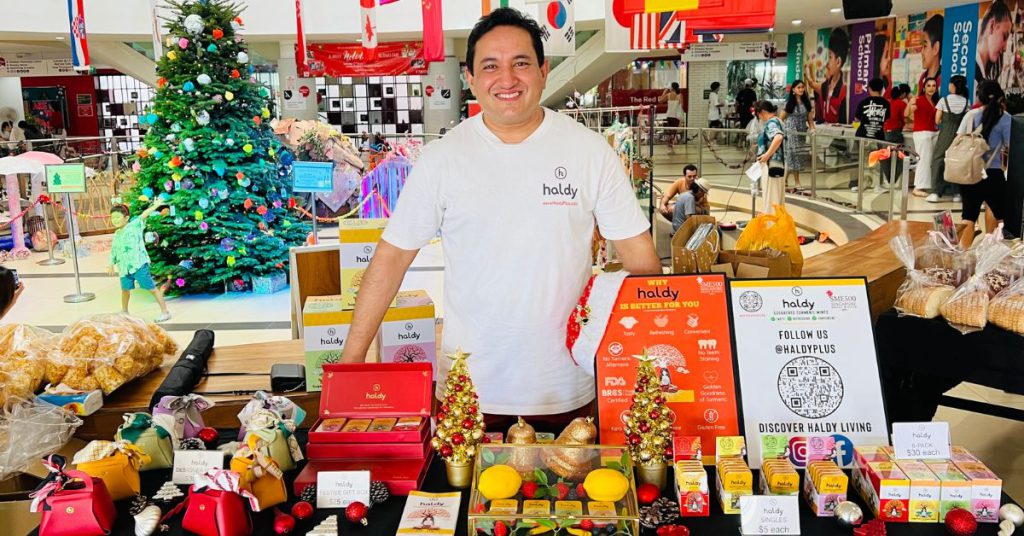
So, he envisioned a mint that could seamlessly fit into anyone’s daily routine without the mess or aftertaste that turmeric supplements often leave behind.
The goal wasn’t to market Haldy as a supplement but as a “better-for-you” alternative to regular mints. By using the permissible amount of turmeric (curcumin), Haldy mints offered fresh breath with the added bonus of turmeric’s golden goodness.
“We had to balance taste, health benefits, and convenience—a tricky formula,” Push added.
According to a research study, curcumin, a polyphenol, has been shown to benefit inflammatory conditions, metabolic syndrome, pain, and to help in the management of inflammatory and degenerative eye conditions. In addition, it has been shown to benefit the kidneys.
Building with challenges and triumphs
Of course, creating a turmeric mint wasn’t as simple as having the idea. The journey to bring Haldy to life took over 24 months of research, development, and consumer trials, said Push.
The team faced numerous challenges in balancing flavour and functionality while ensuring that the turmeric didn’t overpower the mint experience.
They also needed to develop a product that appealed to a broad audience, even those unfamiliar with the taste of turmeric.
“Our biggest concern was the aftertaste and teeth staining, but after several rounds of trials, we managed to crack it,” Push shared.

The result? A refreshing, sugar-free turmeric mint that not only tastes great but also avoids the common drawbacks of traditional turmeric supplements. It was launched in early 2023 to great reception, Push shared.
The thought into the packaging and design
Push believes that one of the things that sets Haldy apart is its eco-friendly, patented packaging. Each steel mint pack is not just aesthetically pleasing but practical, featuring a design that sticks to magnetic surfaces.
The design, influenced by Indian Mural Art, evokes a sense of returning to roots, with earthy colours, the Haldy Lady character, and elements like the Tree of Life and turmeric leaves.
“We wanted the packaging to reflect the product’s uniqueness,” he noted. “It’s not just a mint—it’s a lifestyle product.”
This attention to detail in packaging has not gone unnoticed. Haldy’s packaging has won several prestigious awards, including the 2024 MUSE Design Award in the USA and the PAC Global Brand Marketing Award.
Scaling Haldy and looking to the future
While Haldy started as a solution to a personal problem, it quickly gained international recognition. Push exhibited Haldy at the ISM Cologne in Germany in April 2023, and the product has seen traction ever since.
Through the brand’s strategic positioning as not just as a wellness product but also as a lifestyle choice, Haldy has been able to reach a broad range of consumers, from wellness enthusiasts to those just looking for a tasty, refreshing mint.
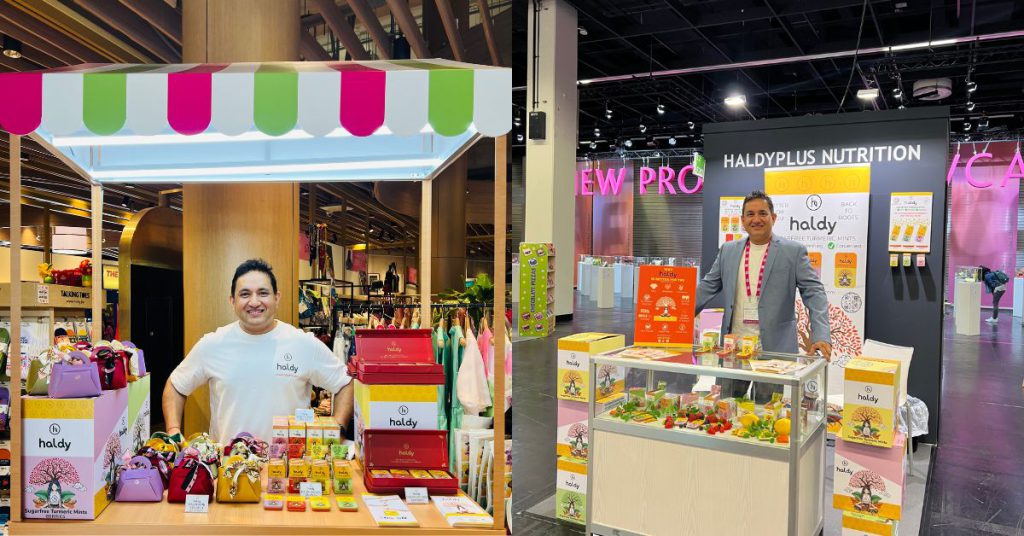
“Right now, our focus is on scaling our Sugarfree Turmeric Mint line,” he said. “But in the future, we plan to expand into therapeutic products under the HaldyPlus range.”
Haldy is entirely bootstrapped and self-funded, with no external capital raised to date. “I wore many hats during this process,” Push explained. “From R&D to production and logistics, I had to juggle everything.”
Despite the challenges, his entrepreneurial spirit has pushed Haldy forward. The brand’s early success is proof that a good idea, backed by dedication and perseverance, can make waves in even the most competitive markets.
A mint with a mission
Haldy’s goal is simple: to offer a breath mint that does more than freshen breath. By incorporating turmeric into a convenient, enjoyable format, Push has found a way to introduce the health benefits of this golden spice into people’s daily routines.
“The world has already woken up to the benefits of turmeric,” he said. “But our mission is to make it easier and more enjoyable for people to consume it.”
With a growing customer base and recognition from industry experts, Haldy is well on its way to becoming a global name. But for Push, it’s still about the same mission that started it all: solving a personal problem and sharing that solution with the world.
- You can learn more about Haldy here.
- Read other articles we’ve written about Singaporean startups here.
Also Read: A ClassPass competitor? This new app lets you access nearly 300 fitness studios in M’sia.
Featured Image Credit: Haldy
TOKEN2049: What experts at the world’s largest crypto event say will drive crypto mainstream
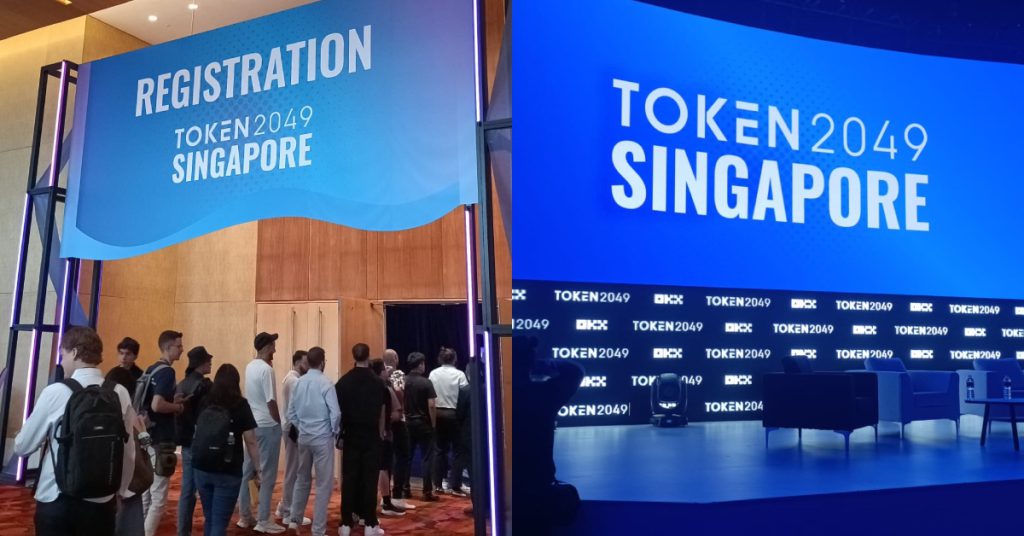
While many Singaporeans and tourists felt buzzed last week because of the annual Singapore Grand Prix Formula One race, it coincided with TOKEN2049, the world’s largest crypto event.
Following the crypto winter in the last two years, the industry is no stranger to scepticism from the mainstream audience and traditional financial institutions—a sentiment that several players in the crypto industry have acknowledged during both days of the event.
This leads them to set their eyes on one titular goal: to take crypto to the masses. But with many obstacles ahead after the slow crypto activity, what does it take to get to that level? Here’s a rundown:
1. Have clear and multi-dimensional regulations

Since the FTX market exchange crash in 2022, we cannot ignore the incredible amount of fraud in the industry due to the lack of clear and harmonised regulations. For Richard Teng, CEO of homegrown crypto firm Binance, it was a “wake-up call” for the industry.
In a panel discussion last Thursday (September 19), four industry leaders, including Teng, echoed a pressing need for more defined regulations as activity in the crypto space increases, making it crucial for policymakers to understand how the industry works fully.
However, regulating by enforcement is seen as “destructive” to the industry—Mike Belshe, co-founder and CEO of crypto giant BitGo, shared his frustrations.
“Unfortunately, a lot of legislators and regulators have to go back, and kind of relearn that, ‘Wait a minute, why is it the way it is?’ And then what’s different about this industry? And how we reply?” said Belshe.
Currently, the regulatory measures vary by country, which sometimes results in the politicisation of the sector. Anthony Scaramucci, founder and managing partner of SkyBridge Capital, who also had a short-lived stint with the Trump Administration, shared that the United States, in particular, needs to adopt the best practices that strain out politics.
It’s also worth noting that the presidential elections in the United States are ongoing at the time of writing, with former President Donald Trump and Vice President Kamala Harris contending for the title. Belshe has notably expressed his support for Trump following his support for the industry.
“We politicise the regulatory process in the US, and so it’s either hard left or hard right regulatory ideas. It’s not right or wrong for the industry. If you go to Dubai or a place like Singapore, they’re looking at it very clinically, and it’s almost an independent standard of regulation straining out politics,” Scaramucci explained.
Technology does not care about politics.
Jeremy Allaire, co-founder, Chairman and CEO of Circle
Allaire added that navigating the bureaucracies is also an obstacle for many crypto firms, where more things will need to be considered than to simply “copy and paste” what other countries have done.
In one instance, Scaramucci asked Teng, who had a 13-year tenure as the Director of Corporate Finance at the Monetary Authority of Singapore (MAS), on the factors inhibiting policymakers to engage with key industry players to spur improvements on the regulatory front.
Teng responded by stating that the lack of budget and resources can prevent an agency from devoting expertise to understand the sector, which does not become a priority when formulating a regulatory framework that generates revenue.
He added that regulators also need to consider the potential transformative impact that the crypto market has on traditional financial institutions, and that it is important to educate law enforcement agencies and government bodies about the sector and how they can better support their innovations.
“It must become an agenda. The agency must be given enough resources to give enough attention and improve pattern to try to do this,” stated Teng.
2. Making DeFi products more accessible

With Singapore having efficient retail fiat systems, it seems less likely that people will pivot to paying with cryptocurrency. However, a recent survey presented that crypto payments have become more common in the city-state, implying that activity in the space has increased globally and is on its way to revival.
In a keynote consisting of Decentralised Finance (DeFi) veterans last Wednesday (September 18), Rune Christensen, co-founder of Sky (previously known as MakerDAO), predicted that DeFi would reach its inflexion point within the next few months and that players will need to focus on making it easier to use.
“It already works. It’s already great. Now we need to sort of level it up, prove to the world that [DeFi] has become more mature,” Christensen stated. “The market is ready for this.”
Kain Warwick, founder of platforms Synthetix and Infinex, echoed the same sentiment and used his experience launching Infinex to solve problems he encountered working on Synthetix.
He explained that his team spent years building a market platform on the chain, but the reception was lacklustre, forcing him to rethink his approach.
The user base needs to be placed front and centre when a new technological product is created, regardless of the category the product falls under. Stani Kulechov, founder of Aave Labs, emphasised on the panel that developers can better attract users and monetise their products by doing so.
He also added that DeFi players must strike the right balance between creating greater user accessibility and offering innovative features.
I sort of looked around and I was like, “This doesn’t make sense, that we’ve built something that’s so useful and yet it’s not actually being used.”
There wasn’t a mass exodus from Centralised Finance (CeFi) to DeFi, right? And so, that really forced me to think about how we could take these protocols that we’ve built and make them accessible to people who were living on centralised exchanges and felt comfortable there.
Kain Warwick, founder of Synthetix and Infinex
3. Tap into developing markets

With many crypto firms finding it difficult to attract and retain active users on their platform or service, the key is to find the correct user market.
Ben Zhou, co-founder and CEO of Bybit, shared in a separate panel discussion that his company saw a larger onboarding in countries including Africa and India, where their financial systems are immature compared to their global counterparts, making it easier to get users to get assimilated onto their platforms.
“We can see that crypto is really empowering these guys and, in a way, replacing or establishing their position as a financial type of role. So I think this is something really interesting,” said Zhou last week.
Vivien Lin, the CPO of BingX, also saw a similar trend in their user demographics. She added that aside from having a developing financial infrastructure, it’s also apparent in countries with depreciating currencies and those looking to convert their fiat currencies to cryptocurrency.
However, Lin cautioned that crypto firms shouldn’t dive headfirst into a new market without meeting the compliance requirements specific to a particular country. Gracy Chen, CEO of Bitget, agreed with Lin when she highlighted the importance of localising their product offerings.
She explained with an example that Asian users prefer memecoins, SocioFi, and GameFi, but this is not usually the case for European audiences. With Bitget’s 45 million users pooling from more than 100 countries, the company needs to customise their services and products in each market.
What’s next?
Across all three panels, all experts remained bullish on the sector, with more activity and innovations to generate higher levels of attention in 2025.
In particular, Allaire expressed his optimism in the industry and compared the development of the industry from when he first entered 11 years ago until today.
[I’m] incredibly optimistic. We’re seeing the most technological progress that we’ve seen, the most legal progress that we’ve seen-most market infrastructure project progress that we’ve seen in 11 years since I’ve been in this industry. So I believe the next couple of years are going to represent extraordinary growth for this industry.
Jeremy Allaire, co-founder, Chairman and CEO of Circle
President of CoinW, Sonia Shaw, remained bullish on the crypto market following the news of the Fed rate cut.
“I would say yesterday, 18th of September of 2024, should be the official starting day of this bull run. If you think you have made money this year, wait for the bigger one because the whole market economy will change in the next 12 to 24 months,” she proclaimed.
Also Read: Web3 startup Imaginary Ones is bringing the world’s largest gashapon machine to S’pore
Featured Image Credit: Vulcan Post
Why this Malaysian software developer created yet another calorie tracking app

If you’ve ever tried losing weight, you’ll know that the journey isn’t easy.
This is something that software developer Hazmi Irfan experienced.
“Like many, I gained a lot of weight during the pandemic and tried numerous times to shed it, but I always ended up giving up,” he said. “The main issue I found with existing apps is that they ask you to do too much—they expect you to change your diet completely, cook all your meals, or even fast. It felt overwhelming.”
Facing these challenges, he decided to create his own solution—Tied.
Forming a habit
An app available on Apple App Store and Google Play, the whole objective of Tied is to make calorie-tracking a habit. And the answer to doing so is simple: simplification.
Tied makes it easy for users to log meals through AI. Users can simply take a photo of their meal, and the app uses AI to provide a calorie estimate, removing the need for manual entry or searching for food by name.
A common concern here, of course, is accuracy. But to that, Hazmi typically explains it this way.
“Imagine you have an expert who knows the calorie content of all meals,” he said. “If you show this person a photo of your meal and ask them to estimate the calories, they might not always be spot on, but they’d give you a pretty good guess.”
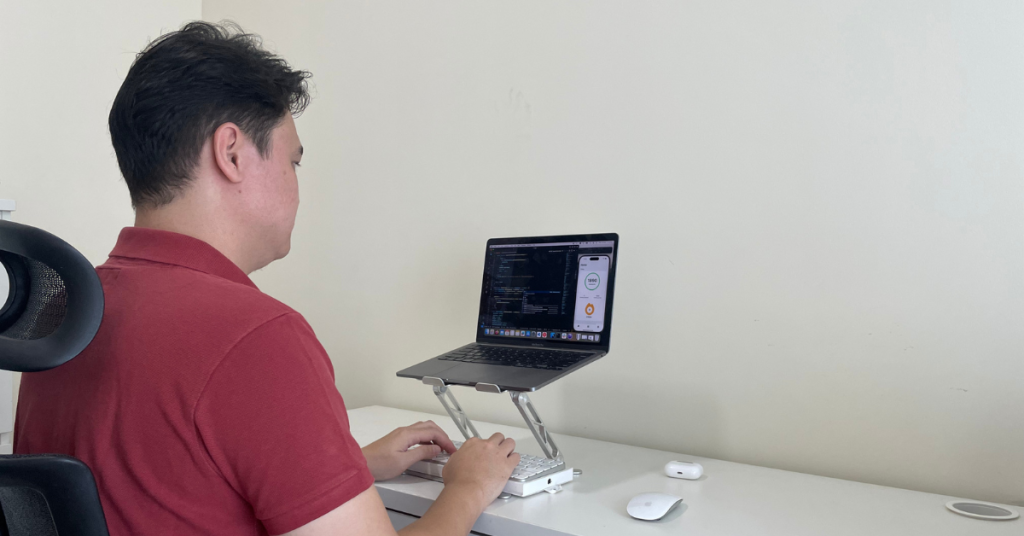
Similarly, Tied’s AI is pretty accurate, but not perfect. It might mistake Teh Tarik for coffee—a mistake that humans might make, too. Despite occasional errors, the AI seems to perform well with local dishes.
If the AI makes a mistake, there’s a feature that allows users to provide feedback, which is used to improve the accuracy over time.
That said, it has been a challenge to get the AI to accurately estimate calories while still providing fast responses. Hazmi has been working on improving it with user feedback and ongoing adjustments.
Aside from the AI tracking, the app also has a streak feature that tracks how many consecutive days users log their meals. This helps keep users motivated and engaged. To encourage the streaks, the app sends reminders.
The app doesn’t ask users to weigh themselves every day because that can be discouraging, especially with daily weight fluctuations.

Rather, it’s all about focusing on meal-tracking to help build a healthy habit without adding any extra pressure. The idea is to make calorie tracking easy and encouraging, so it just becomes a natural part of your routine.
Trying Tied for myself
Having used the app for a couple of days at this point, I find that I do really enjoy the simplicity of the app. There are no ads, no unnecessary frills—just a clean, simplistic user interface.
Starting out, they asked for my weight and height, as well as how often I exercise. From that, they determined the number of calories I should consume to lose weight.
Logging the foods I ate is not just simple but quite entertaining. There were a few times when I forgot to take the image of the food I was eating, but I find that describing the food is quite fun, too. It’s able to pick up on my key words, elaborate on what ingredients were likely used, then come up with an estimated calorie count.
Something I appreciated about the app was that it maintains a level of positivity, unlike other fitness apps I’ve used that sometimes use aggressive wording and harsh colours to motivate you.
For example, instead of using red to indicate a missed goal, it uses soft grey instead.
Hazmi shared that he understands that calorie tracking can sometimes be tough on mental health, especially when there’s no apparent progress. That’s why he intentionally kept things positive and supportive.
“Instead of fixating on strict calorie limits, I just want users to track their meals consistently, even if they go a bit over their goals,” he said. “If you exceed your intake today, just keep tracking. If you exceed it tomorrow, keep tracking.”
They say it takes 21 days to form a habit (though new studies disprove that), but with the user-friendliness of Tied as well as the element of fun with the AI component, I find that the habit of calorie-tracking might just be easier than ever.
Simple but effective
Currently, Hazmi balances his day job with developing Tied.
“Whatever free time I can carve out, I spend on developing Tied. It’s challenging, but I’m passionate about it, and that keeps me motivated,” he said about juggling his commitments.
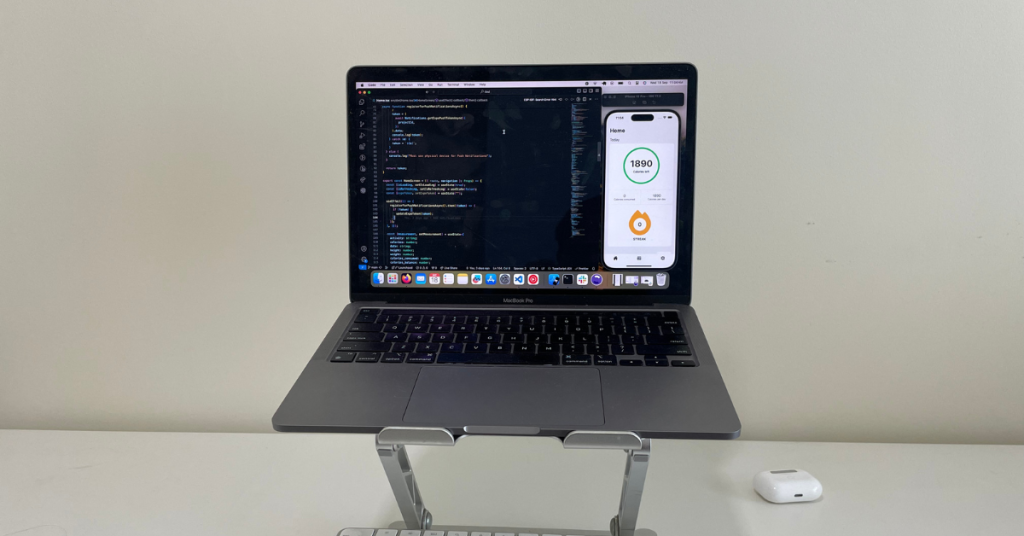
So far, the reception has been positive, Hazmi said. Users are impressed by how accurately the app identifies food. “Some are surprisingly disappointed when it gets it right,” he added.
At the time of writing, the app has 150 active users. While that number may seem small, 150 people actively logging their calories daily is quite an impressive impact.
“This shows there’s a real need for this kind of app, and it’s a great sign for the future,” Hazmi pointed out.
Tied is free to use right now, but the founder plans on rolling out a subscription model eventually. He aims to keep the core features free to access, and would only charge for extra features that “offer real value”.
“What exactly those paid features will be is still up in the air—I’m taking my time to figure out what would be most beneficial for users based on their feedback,” he said.
Hazmi also shared that as a thank you to those who’ve supported Tied early on, anyone who registers before the subscription model is rolled out will get free access to the paid features, even after the full launch.
“It’s my way of showing appreciation for those who tried the app early and provided valuable feedback,” he expressed.
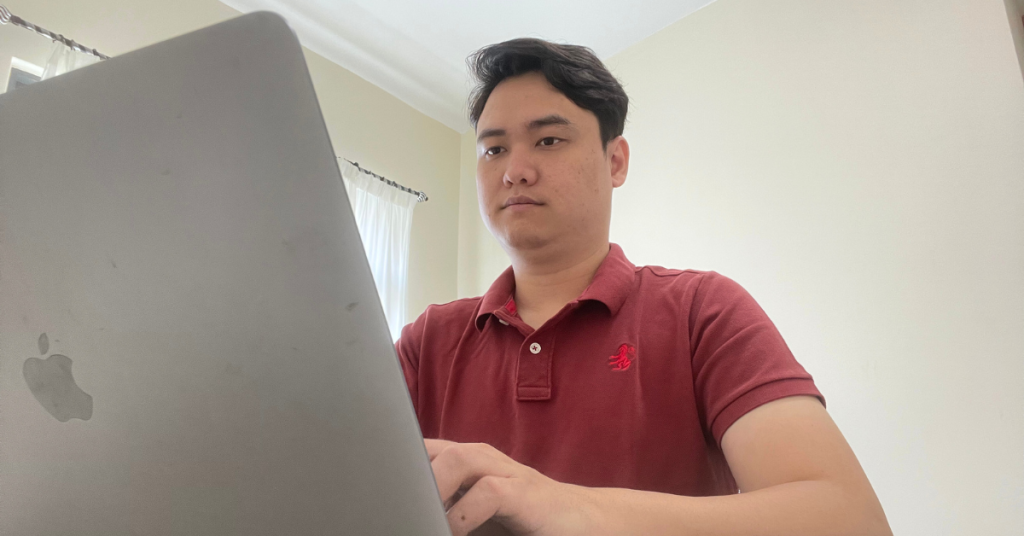
For now, Hazmi is focused on fine-tuning Tied based on user feedback, improving the AI, and ensuring it’s effective for calorie tracking—not just for losing weight, but also for maintaining and even gaining weight when needed.
Believing in the potential of his app, the developer hopes to eventually transition to running Tied full-time. This will aid in his journey to establishing Tied as the go-to app for checking calories with every meal.
“Given Malaysia’s high obesity rate, I’m driven to use Tied to help tackle this issue and encourage healthier living,” he said. “I see a lot of potential for Tied to grow into something even more substantial, with expanded features and greater impact.”
Also Read: 5 scenarios in which you would appreciate having the reliable ASUS Vivobook 16 for work
Featured Image Credit: Tied
He used to be a line cook in S’pore, now owns a pad krapao specialty restaurant in PJ
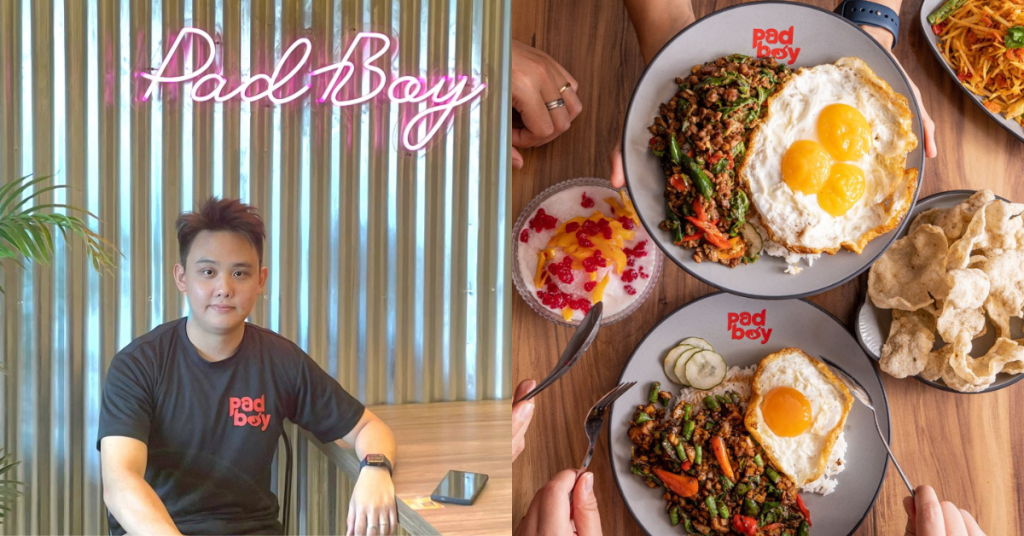
Opening a restaurant is no easy feat, but Alvin Lim, the founder of Padboy, makes it seem like it was the natural next step in his culinary journey.
From working under a celebrity chef at a Thai restaurant in Singapore to becoming the owner of a Thai street food haven, Alvin’s story is one of grit, determination, and teamwork.
For him, the idea of running his own place was always there, lingering in the back of his mind. However, it wasn’t until his wife gave him that extra nudge that he truly believed he could make it happen.
“She was like my personal cheerleader, idea generator, and support system all in one,” Alvin told Vulcan Post. It was a team decision, one that would change both their lives.
Padboy isn’t Alvin’s first venture, though. Before this, he founded Foo Fee, an Asian-style cafe-restaurant in Kepong, which now has two thriving outlets.
But Alvin wanted something different for his next venture—a new challenge. That’s where Padboy came in.

The big idea is to keep it simple
Located in Taman Paramount, Petaling Jaya, Padboy focuses solely on pad krapao, a stir fry of meat (typically ground meat), holy basil, and loads of chillies. It’s a popular Thai dish that is served with rice and usually with a fried egg on top.
“Honestly, there wasn’t some grand inspiration moment. I just love pad krapao. It’s simple, it’s flavourful, and I figured, ‘Why not make it the star of the show?’” Alvin said.
Padboy’s mix-and-match concept lets customers choose their protein and customise their dish to their liking, making it a fun, personal dining experience.

“It’s like a ‘choose your own adventure’ for your taste buds,” Alvin mused.
The name Padboy itself reflects the playful, laid-back vibe of the brand.
“‘Pad’ means stir-fry in Thai, and since pad krapao is our main (and only) dish, we thought ‘Padboy’ would be a playful name that’s easy to remember. It’s fun, approachable, and doesn’t take itself too seriously—just like us,” he shared.
Learning on the job
Transitioning from being an employee to a business owner is a rollercoaster, as Alvin soon discovered.
“The biggest challenge has been, hands down, learning how to lead.”
“When you’re an employee, you clock in, do your job, and go home. But when you’re the owner, everything is your job. You’ve got to step up, make decisions, and guide the team, even when you’re not 100% sure of yourself,” he said.
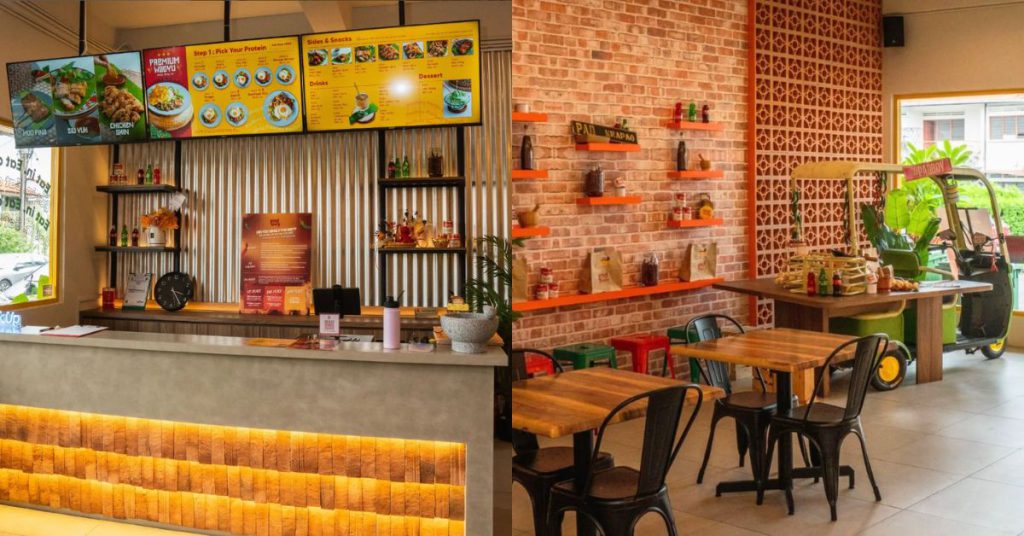
Alvin admitted that the shift was tough, especially when it came to managing people. As a naturally quiet and shy person, leading a team didn’t come easy.
But the steep learning curve was the good kind. “It’s not just about the food anymore; it’s about managing people, budgets, and sometimes, your own nerves,” he noted.
He recalled moments when he longed to go back to being a line cook, but the excitement of building something new kept him going.
Facing the challenges head-on
Well, he did not only face challenges transitioning from an employee to an employer; he also faced challenges in setting up his new business. Renovations, hiring, and branding costs spiralled beyond expectations, and the first month was slow for Padboy.
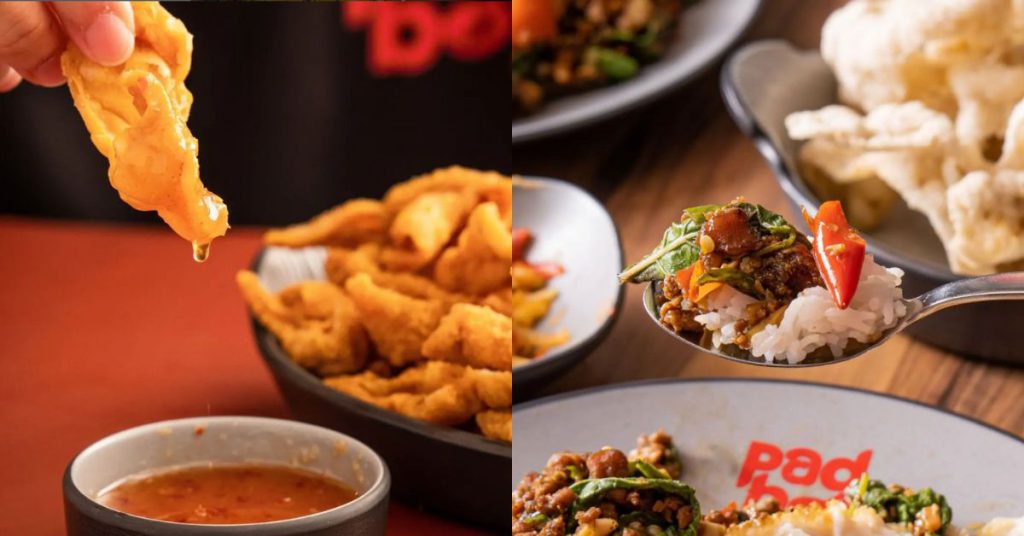
Alvin and his team found themselves staring at the financials, wondering if they’d made a mistake.
But then something amazing happened. Thanks to a sudden social media buzz, Padboy was flooded with customers.
“The social media surge was wild. Suddenly, we had three times the normal crowd, and the waiting time shot up to 45 minutes just to be seated,” he said.
While the surge in popularity was a blessing, it also came with challenges. The kitchen team worked overtime, prepping ingredients into the early hours of the morning. Complaints about wait times rolled in, but instead of being discouraged, Alvin listened to the feedback.
“We closed for a couple of days to regroup, hired more staff, and improved our operations. Now, we’re much more prepared to handle the crowds,” Alvin shared proudly.
The experience taught him that sometimes you just have to adapt on the fly, even if it means working late into the night and making tough decisions on the spot.
A delicious future awaits
For Alvin, Padboy is just the beginning. He and his team are constantly experimenting with new dishes and flavours.
While pad krapao remains the star, they’ve already introduced new items like Mama Mee, Khao Kha Moo, and Green Curry Chicken Rice to give the lunch crowd more variety.
Alvin hopes Padboy will become the go-to spot for pad krapao in Malaysia in the short term. However, in the long term, he’s excited about expanding the business and exploring new ways to customise meals.
“We’ve got a lot of ideas on how to grow, and we’re going to take it one step at a time,” he shared.
As for Alvin personally, his journey from shy employee to confident business owner continues. With the support of his wife and the rest of the Padboy team, he is ready to tackle whatever comes next.
- You can learn more about Padboy here.
- Read other articles we’ve written about Malaysian startups here.
Also Read: Think you have a winning company culture? Get awarded & recognised by TalentCorp Malaysia.
Featured Image Credit: Padboy